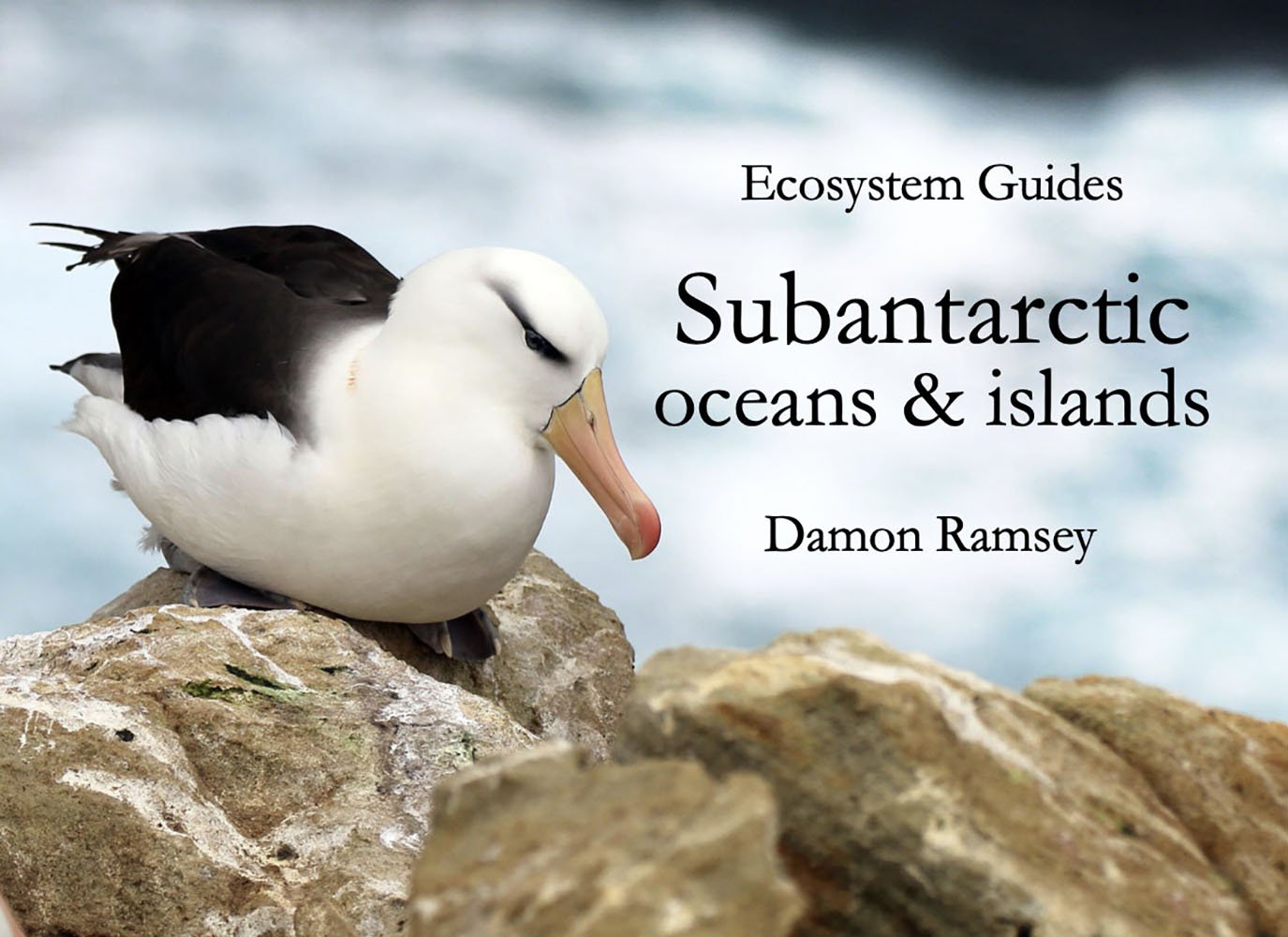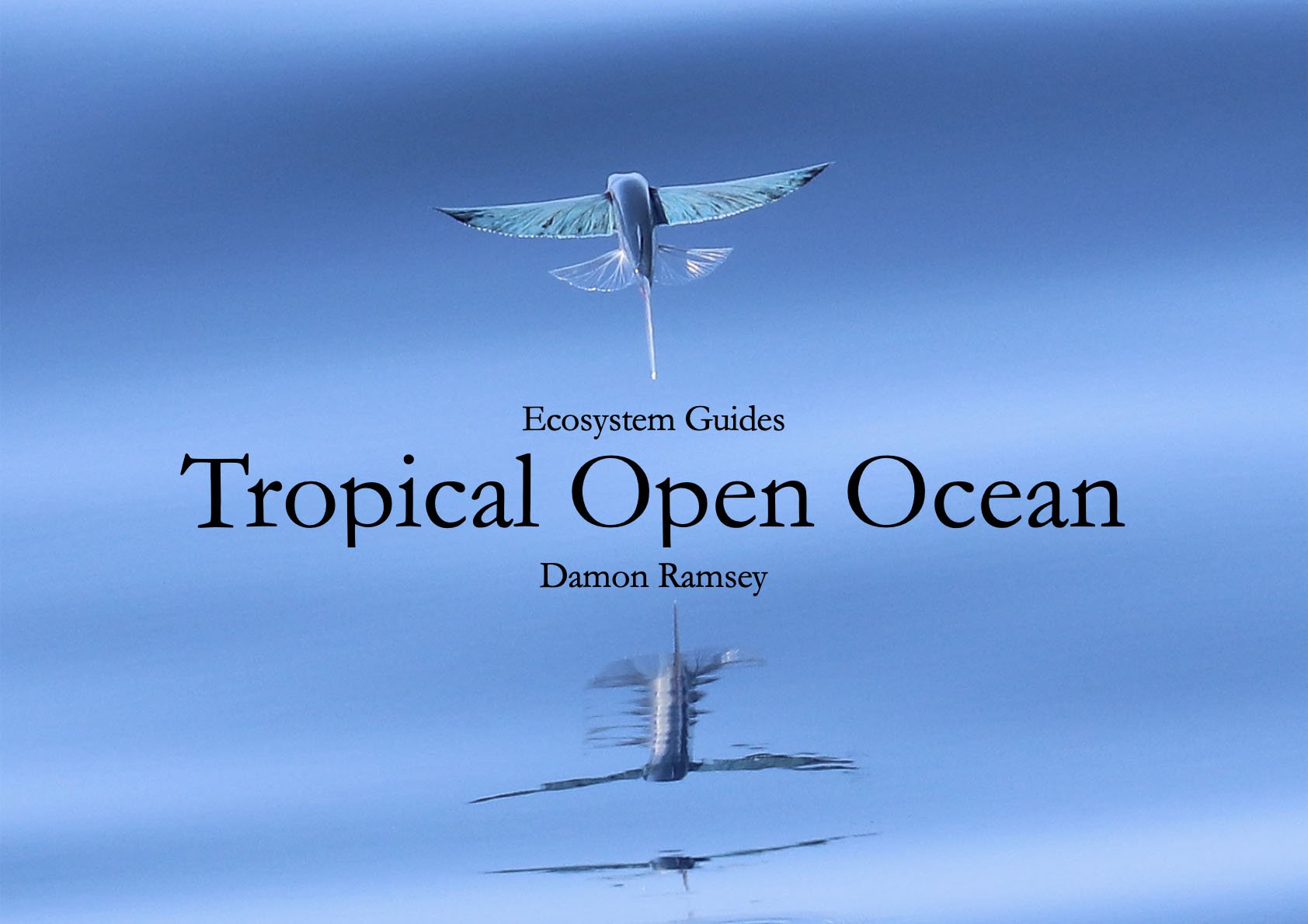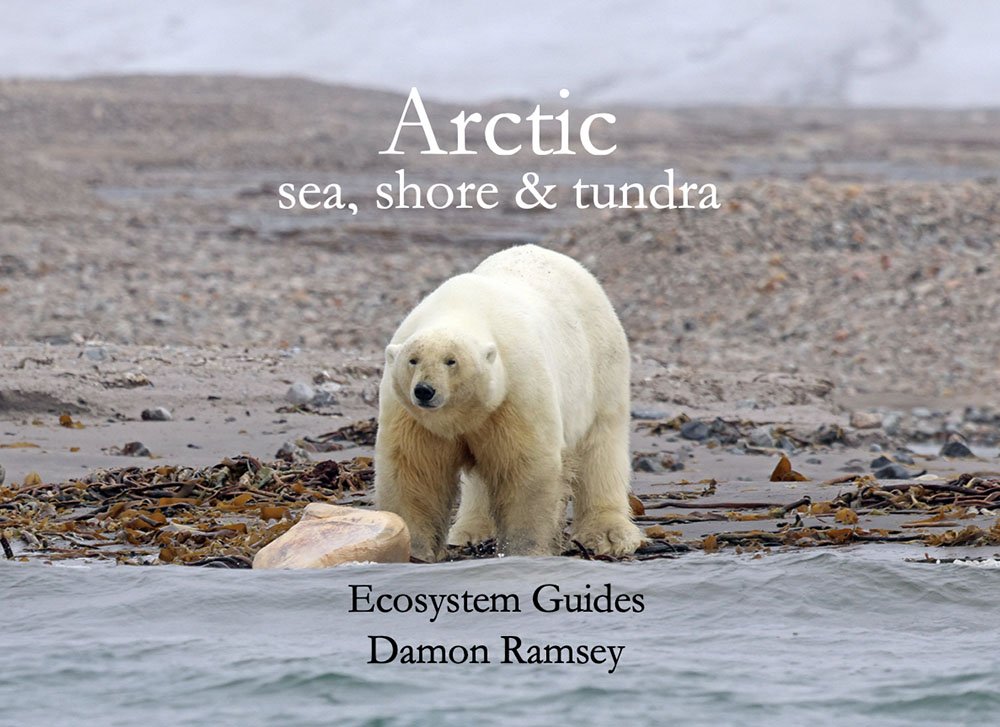ecosystem-guides.com
....exploring the planet's ecosystems
Trip report May 2025
Fiji-Vanuatu-Solomons-PNG-Australia
Silversea
Yes, you can download/copy these images for free. Or on any of the linked pages. On Safari through a Mac, simply right click and "save images to downloads".
As usual, I have avoided most mentions of names of specific crew, staff or passengers for privacy reasons. Unless I really want to embarrass you.
This was an ambitious trip that covered five countries: we departed Fiji, visited Vanuatu, Solomons, PNG, and Australia. Previously on the once standard 75-120 passenger 100 metre expedition ships (e.g: Coral Princess Cruises, Orion, Noble Caledonia, etc) it was typical to explore one country or a couple of island nations in Melanesia. However, the more recent trend of larger ships for expedition, like the Silver Cloud (and others such as Ponant, Scenic and Seabourn), means they can cover longer distances faster, and they 'taste' a range of countries. For example I have done variations of this itinerary many times before as three seperate trips instead of one. This is no doubt appealing to a larger segment of the cruise market.
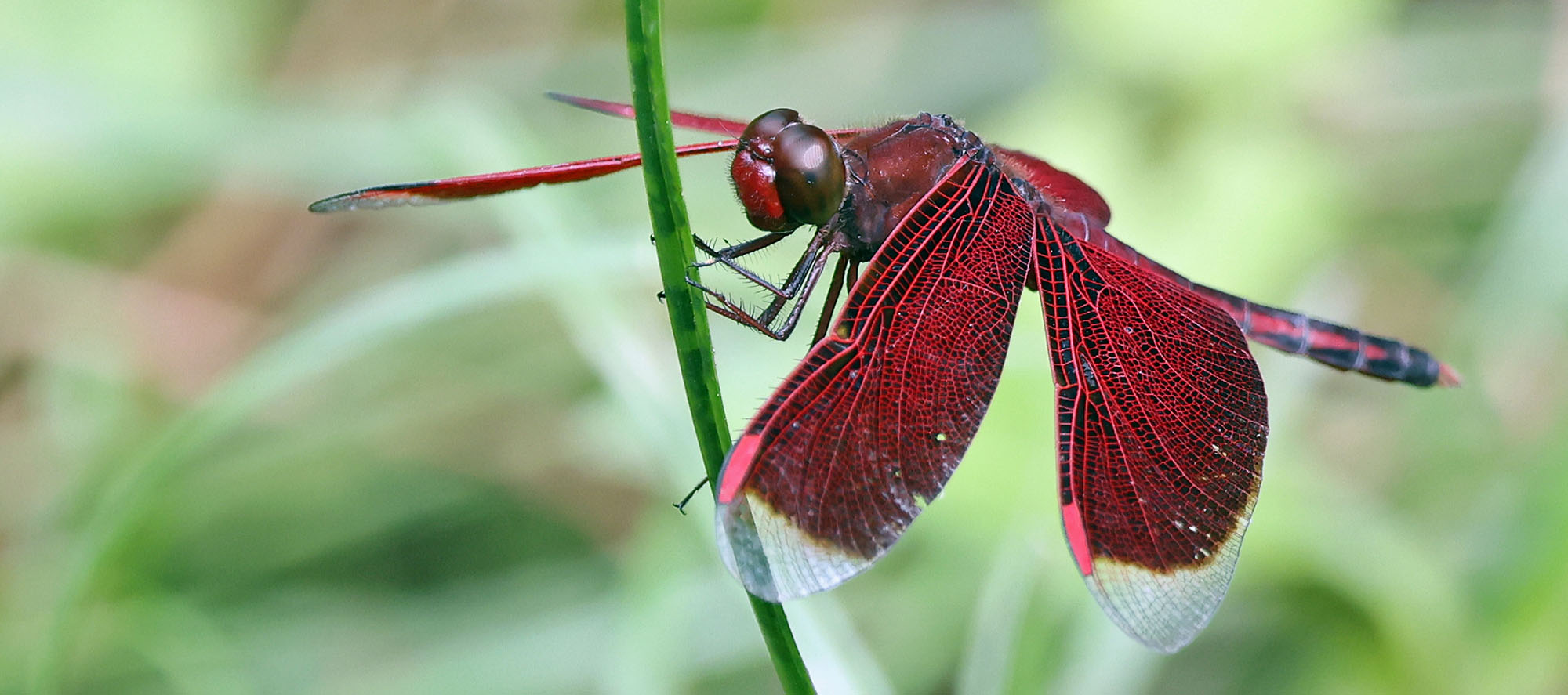 the widespread 'Painted Grasshawk'
the widespread 'Painted Grasshawk'The first country we explored after Fiji was Vanuatu. Although I have been to Ambrym many times over the last two decades, we rarely snorkelled there. However as part of the snorkel team for Silversea last year we investigated the coast for possibilities and found an interesting if slightly spooky spot on a wall that dropped off into the deep, but had enough coral and fish clinging to it's precipice. The good news is that there was even more life there this year, perhaps growth is continuing after previous volcanic disturbance.
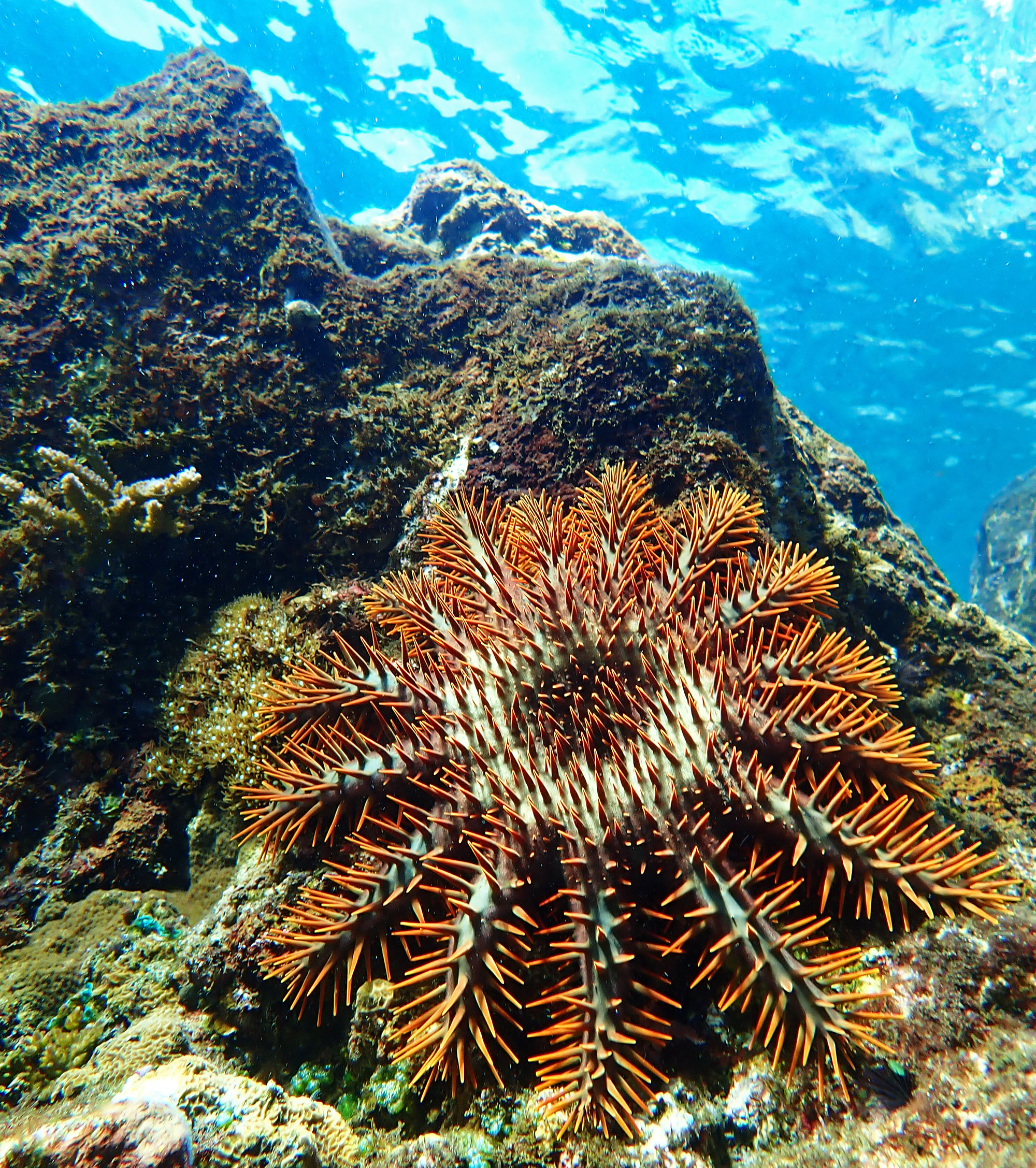 Despite their reputation, Crown of Thorns are a natural part of the coral reefs (Ambrym, Vanuatu)
Despite their reputation, Crown of Thorns are a natural part of the coral reefs (Ambrym, Vanuatu)Few of the expedition staff or passengers had been to Pentecost and seen the land diving before, so that was a highlight for the many who landed. Compared to previous visits, the biggest change I noticed (besides the new road going along the coast) was the useful introduction explaining the land diving. I also noticed that these days the men are snapped up by the vines slightly above the dirt rather than hitting it as previously (perhaps by more skilled design?).
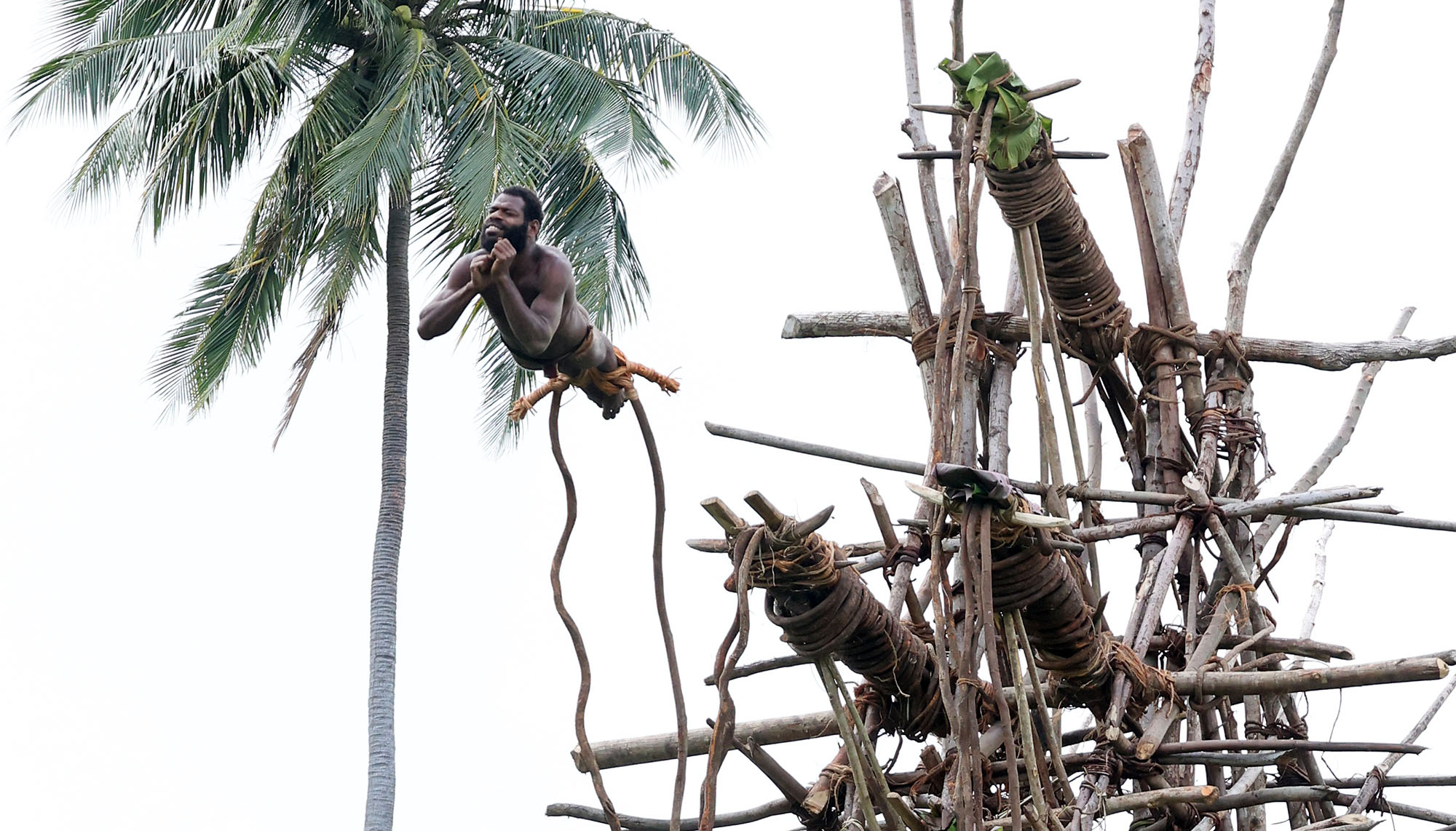
That afternoon I got to go to a new spot!. This was called 'waterfall village' and it certainly lived up to the name. A short but slippery trail revealed a huge and misty waterfall...
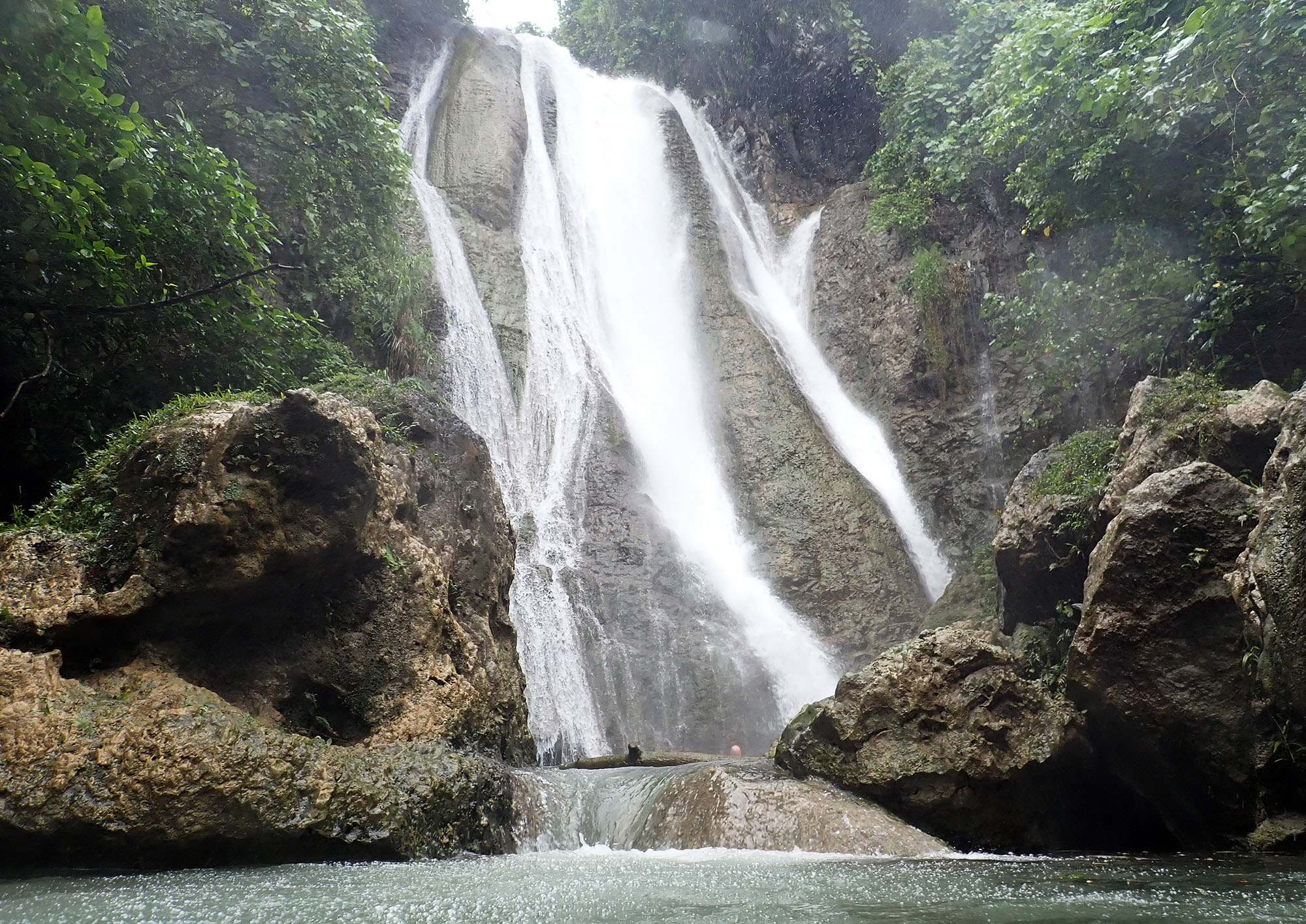
Champagne has been a heavily visited spot, even by larger cruise ships. The coral has been slapped around in the past, but right along the rocks around the south-west there are still lots of cool corals and fantastic fish to be seen...
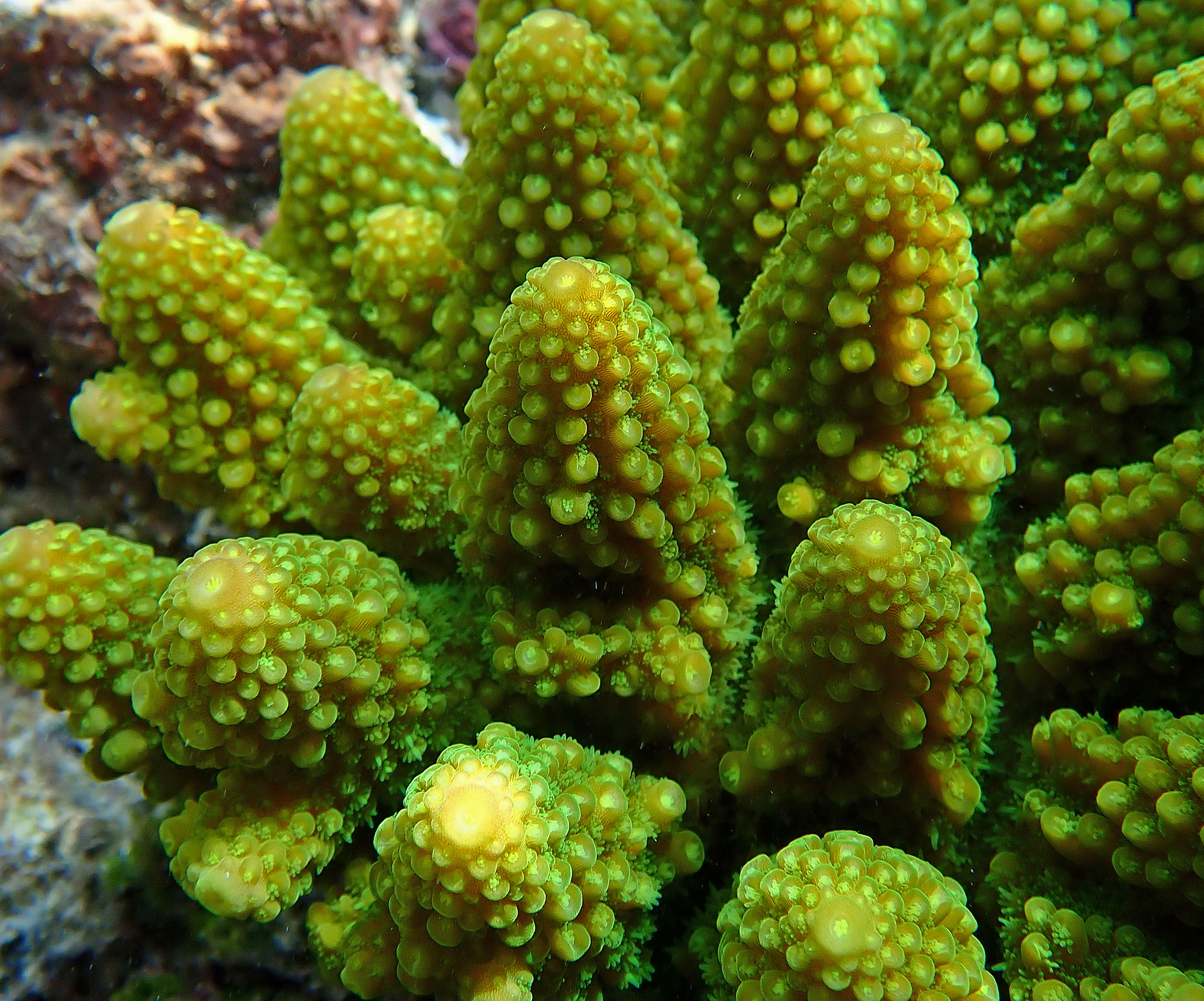 Coral polyp close up (Champagne Bay, Vanuatu)
Coral polyp close up (Champagne Bay, Vanuatu)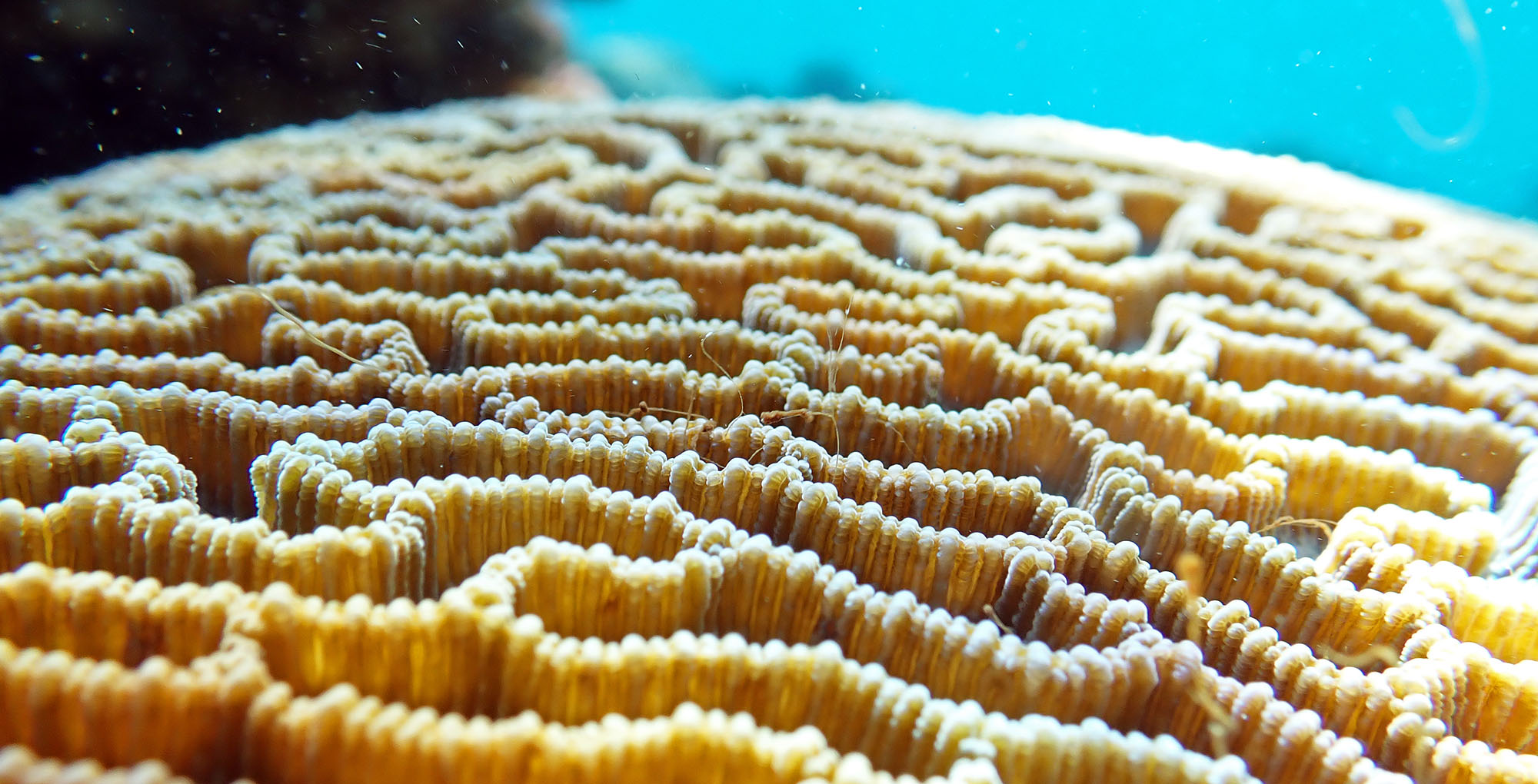 Maze Coral (Champagne Bay, Vanuatu)
Maze Coral (Champagne Bay, Vanuatu)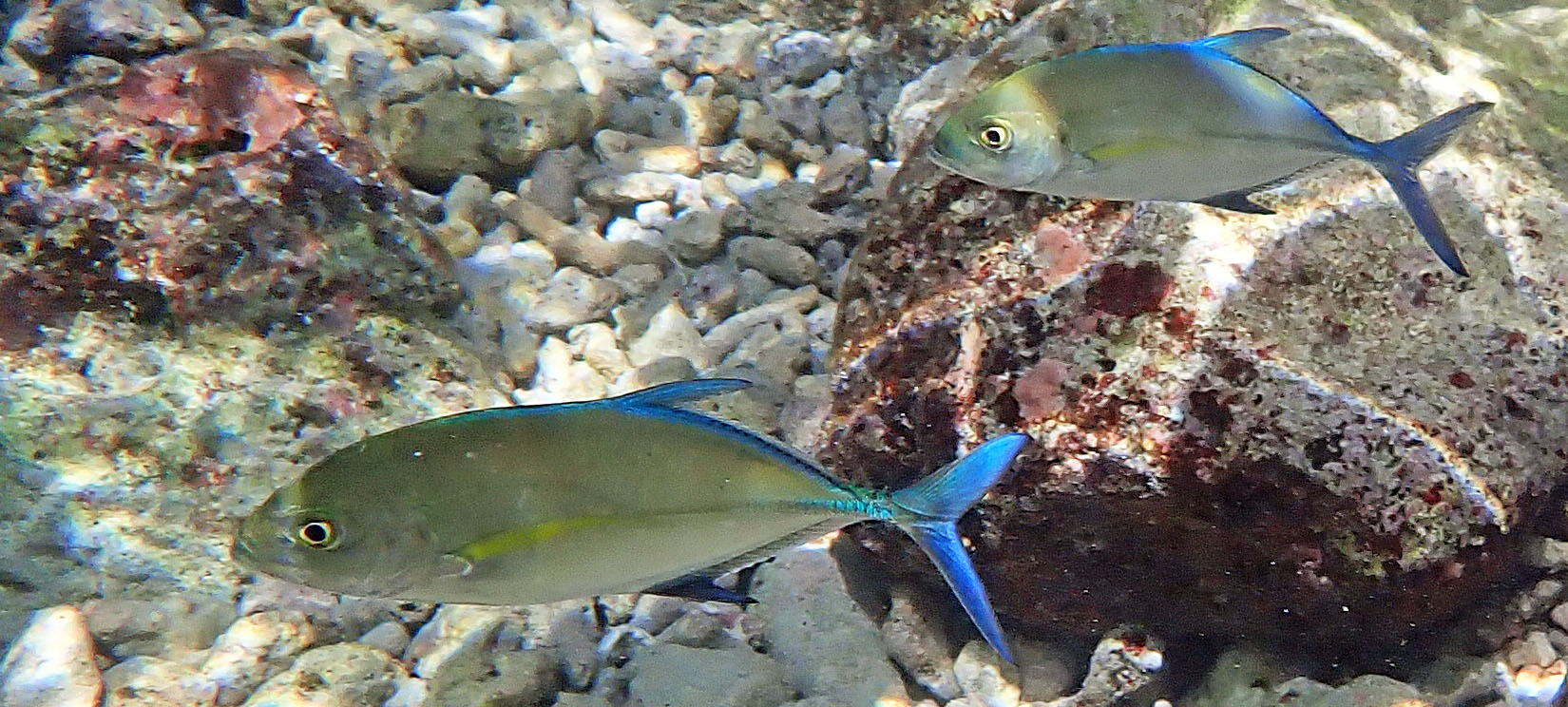 Blue-fin Trevally
Blue-fin Trevally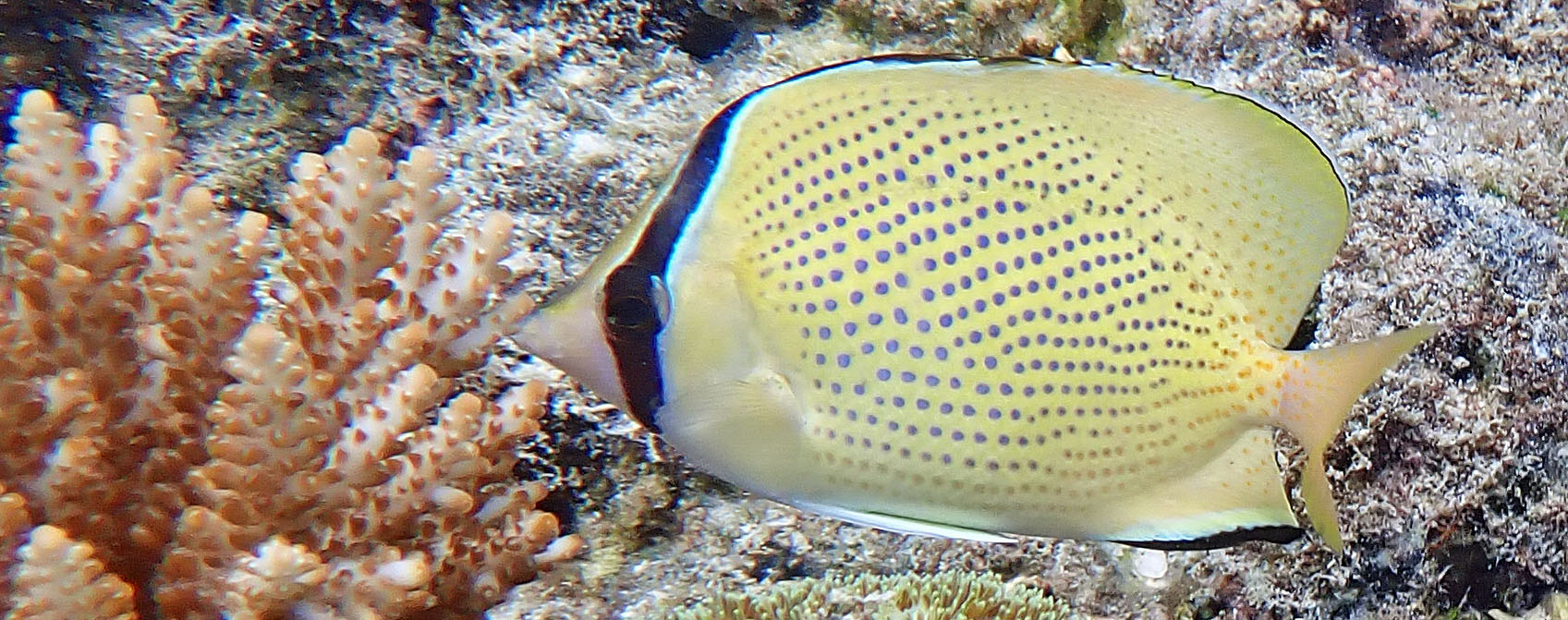 Speckled Butterflyfish (Champagne Bay, Vanuatu)
Speckled Butterflyfish (Champagne Bay, Vanuatu)Then it was off to the Solomons... Nendo Island is a place we don't always snorkel because of the strong current in the middle of the bay around the coral. But I wasn't snorkel master on this particular trip, so that was John's problem!
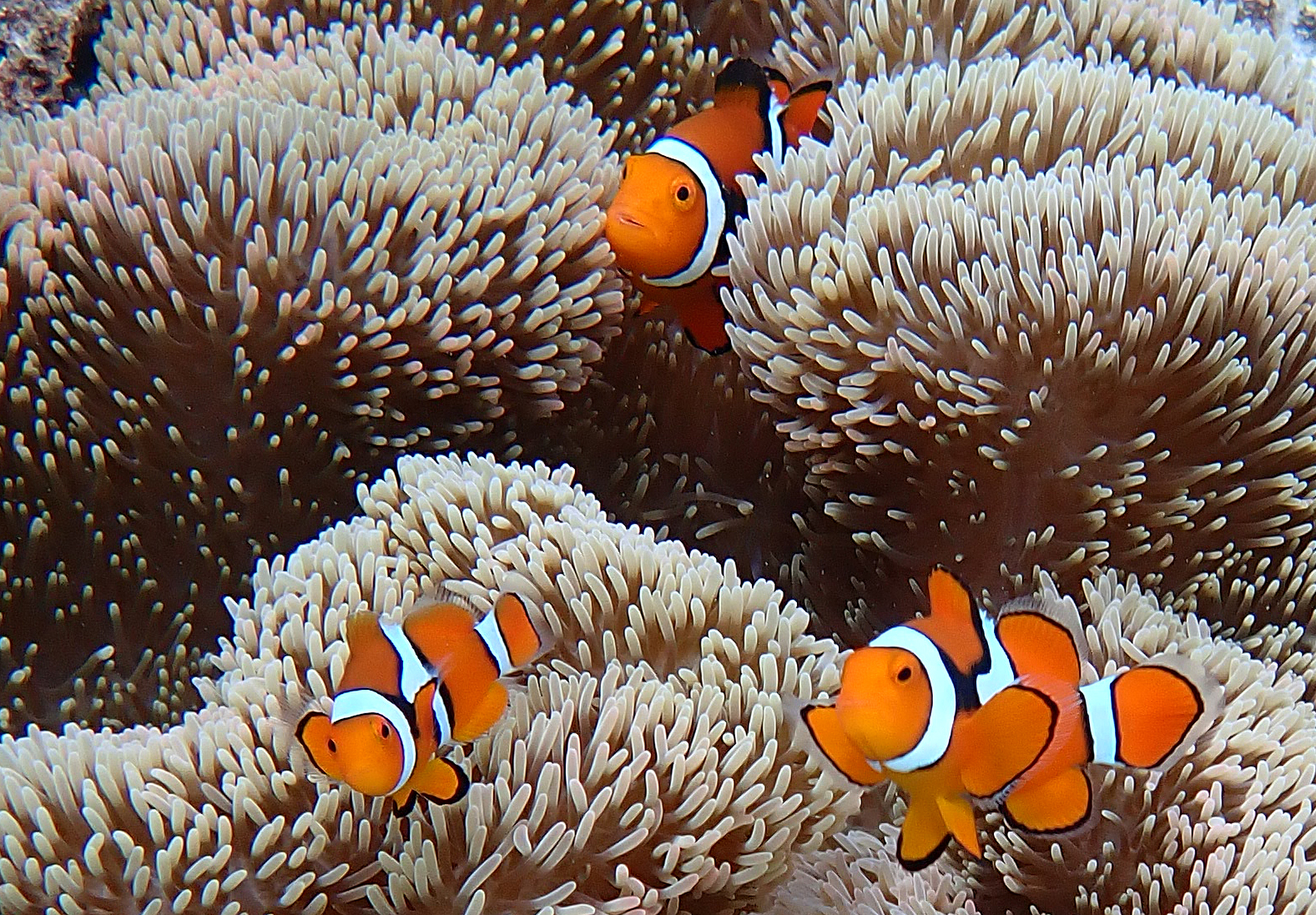 Nemos at Nendo!
Nemos at Nendo!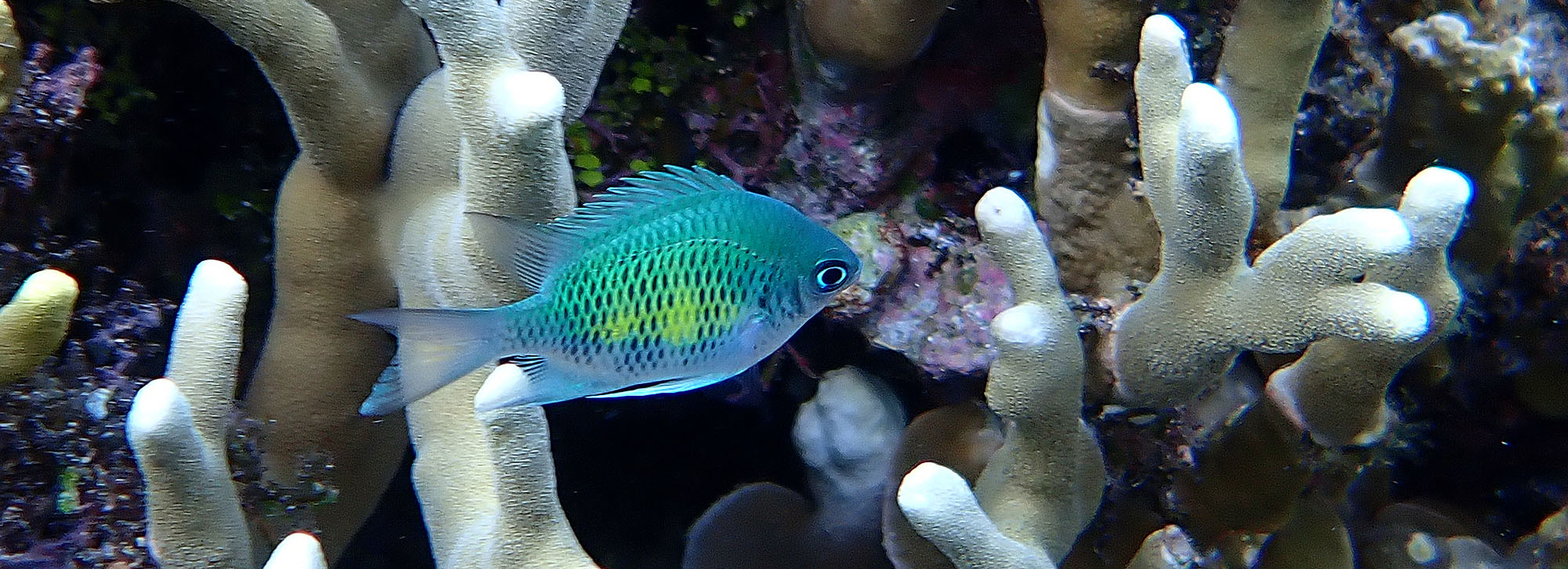 A Staghorn Damselfish (Nendo, Solomons)
A Staghorn Damselfish (Nendo, Solomons)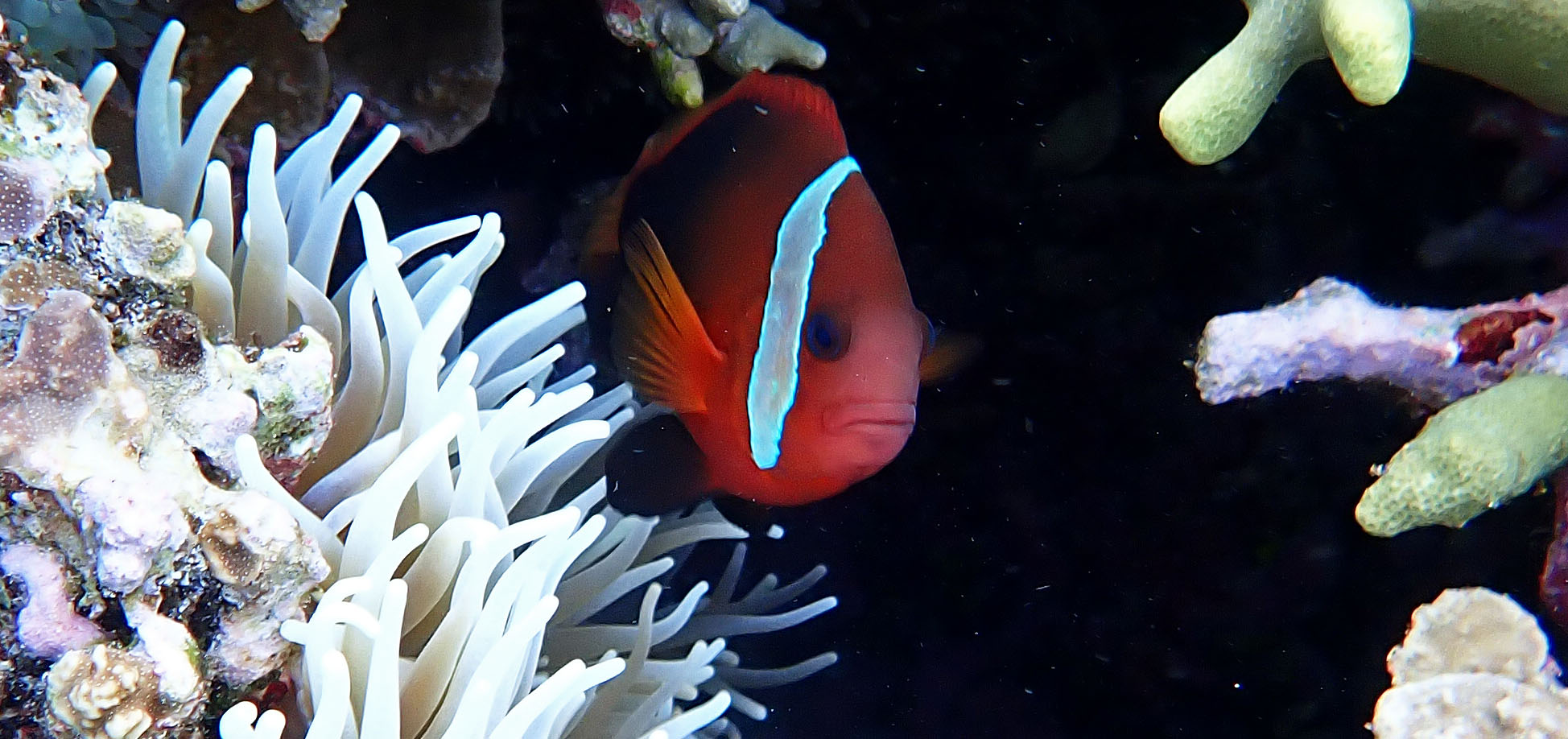 Blackback Anemonefish (Nendo, Solomons)
Blackback Anemonefish (Nendo, Solomons)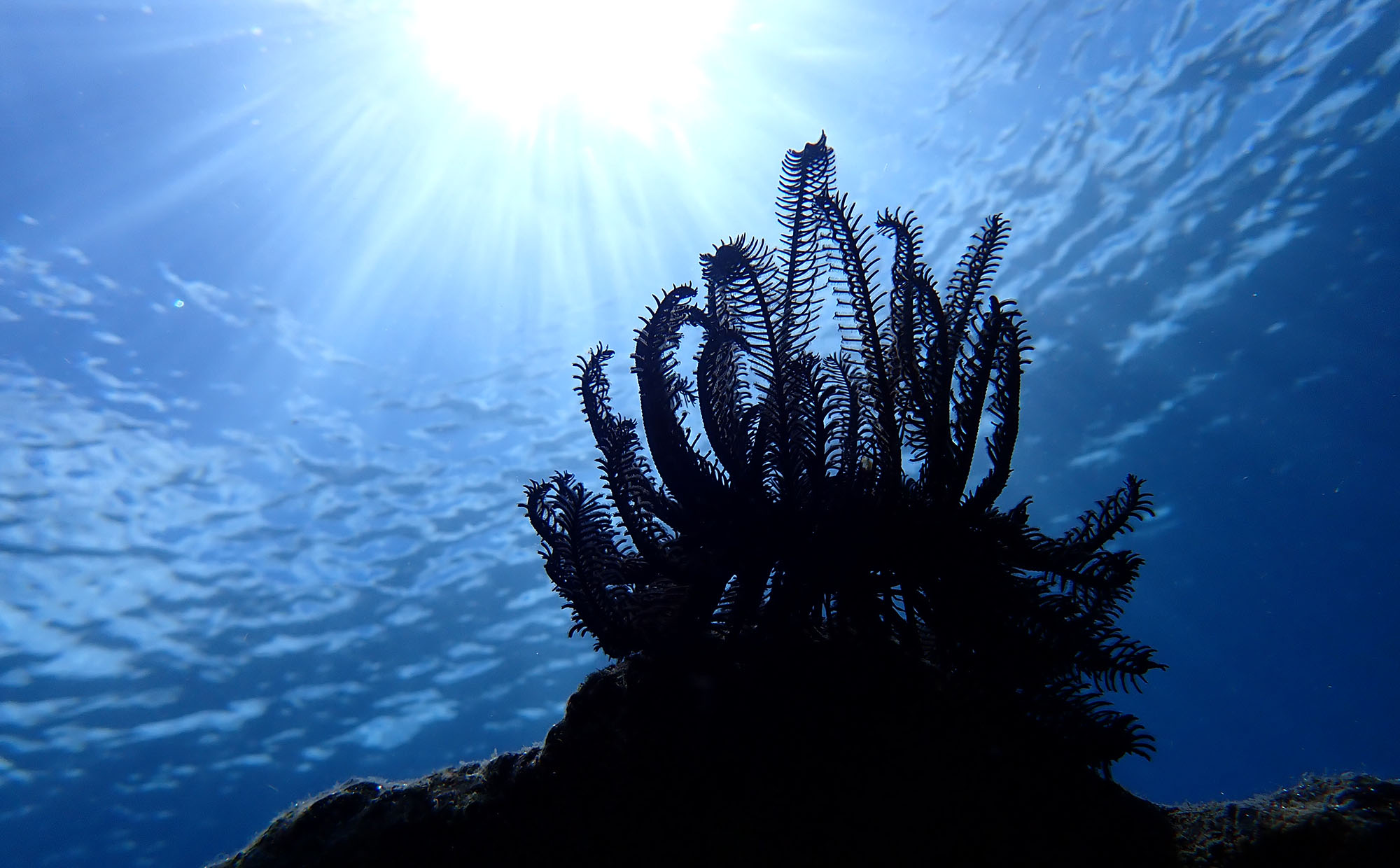 Featherstar silhouetted against sun underwater (Nendo, Solomons)
Featherstar silhouetted against sun underwater (Nendo, Solomons)The next stop at Santa Ana was a regular one for most expedition ships, famous for it's 'mud men' sing-sings. It also usually a good place to nab some birds, however, unfortunately our plans were rained out.
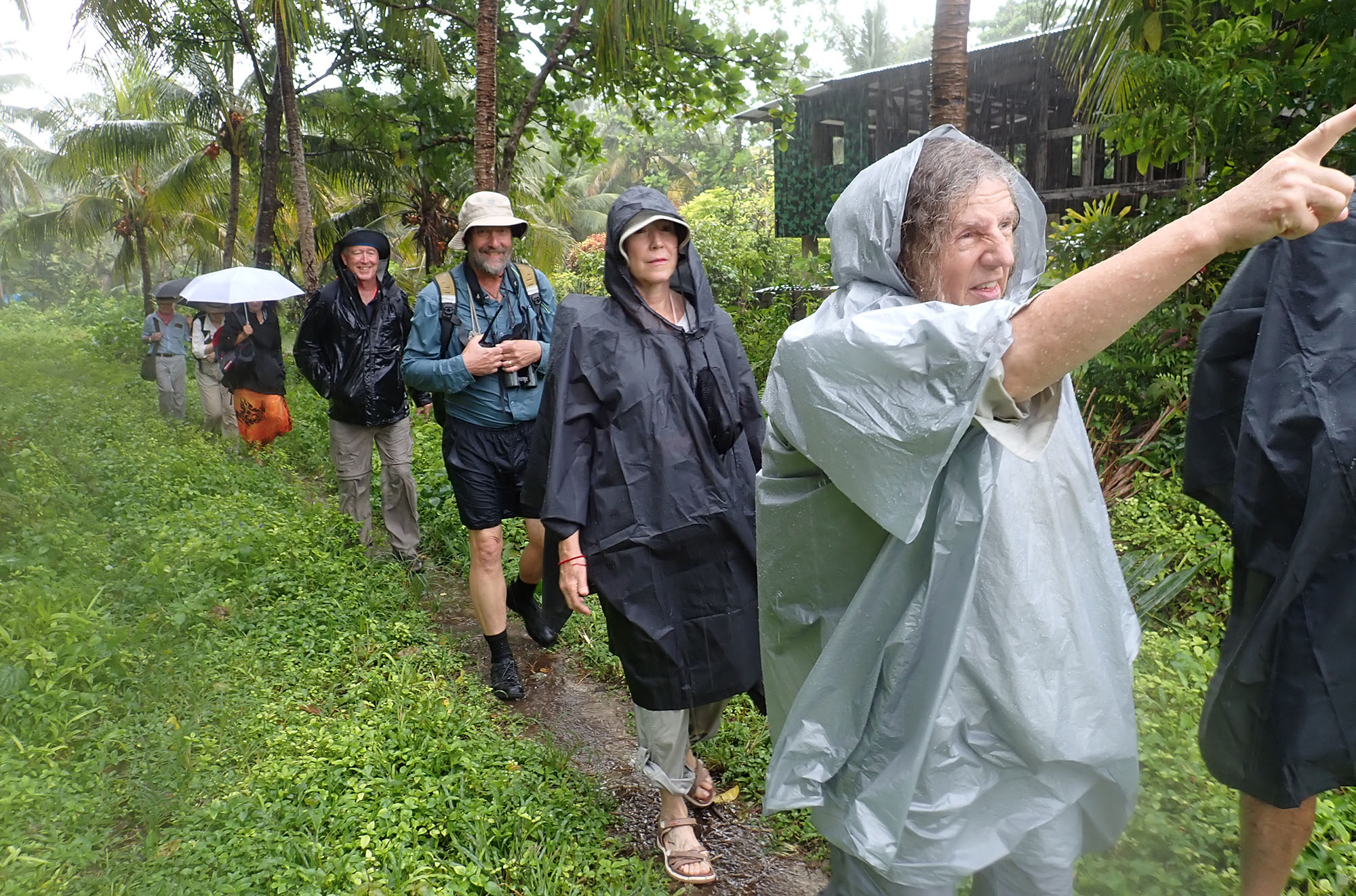 a wet walk..
a wet walk..With dances and walks, we don't always have time to snorkel at Santa Ana, but a quick dip proved productive...
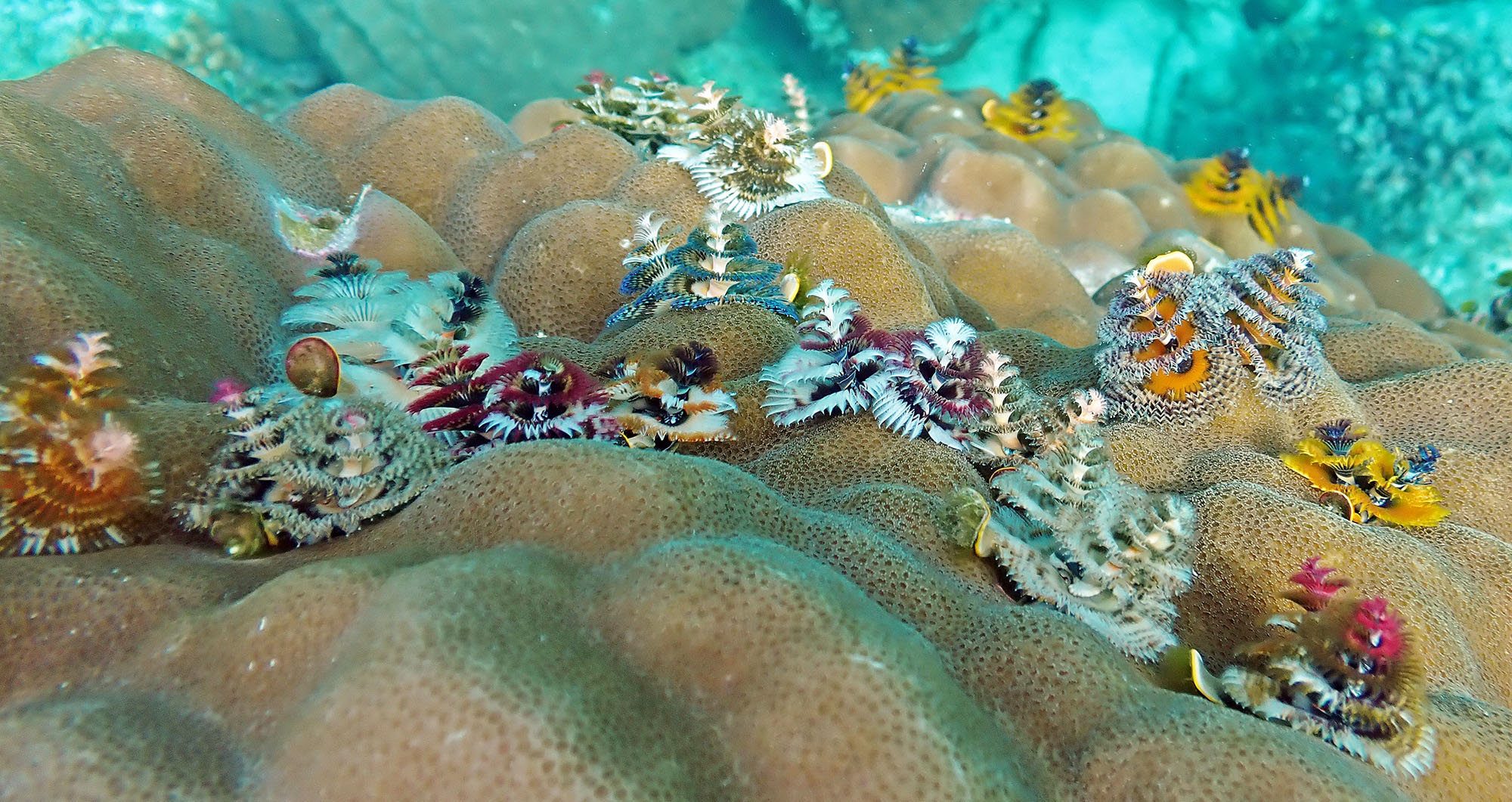 Christmas Tree worms (Santa Ana)
Christmas Tree worms (Santa Ana)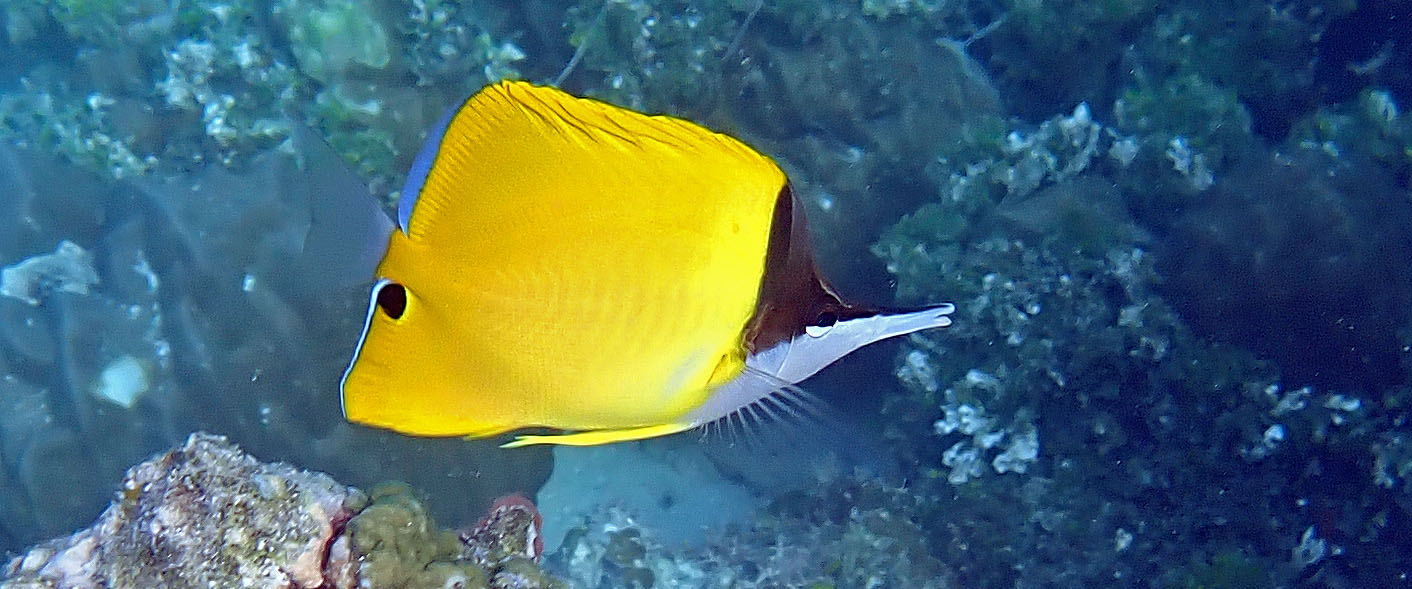 Long-nosed Butterflyfish (Santa Ana)
Long-nosed Butterflyfish (Santa Ana)Another Solomon snorkel site. But only a quick dip for me at the island of Njari...
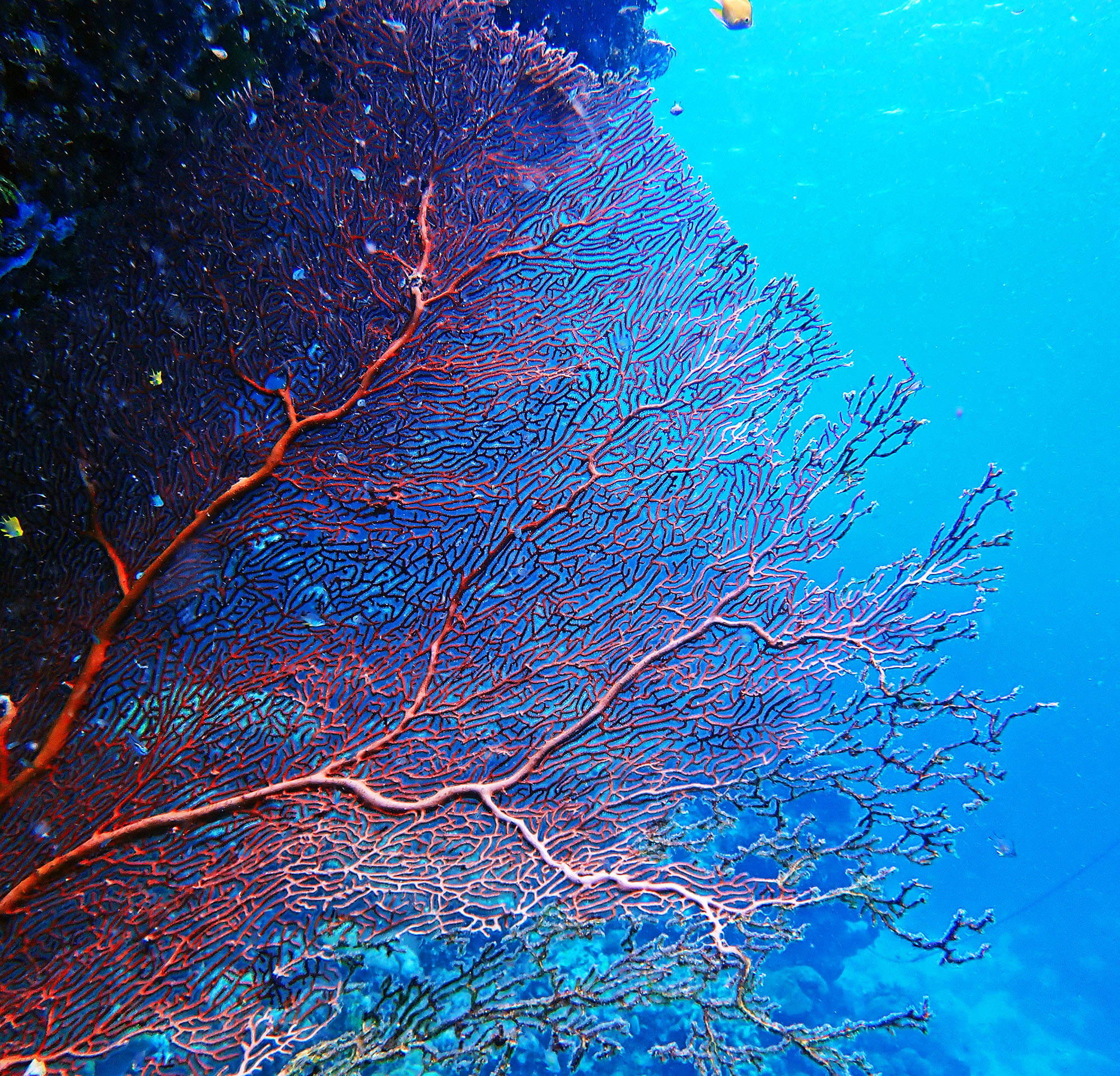 Sea Fan Pink (Njari, Solomons)
Sea Fan Pink (Njari, Solomons)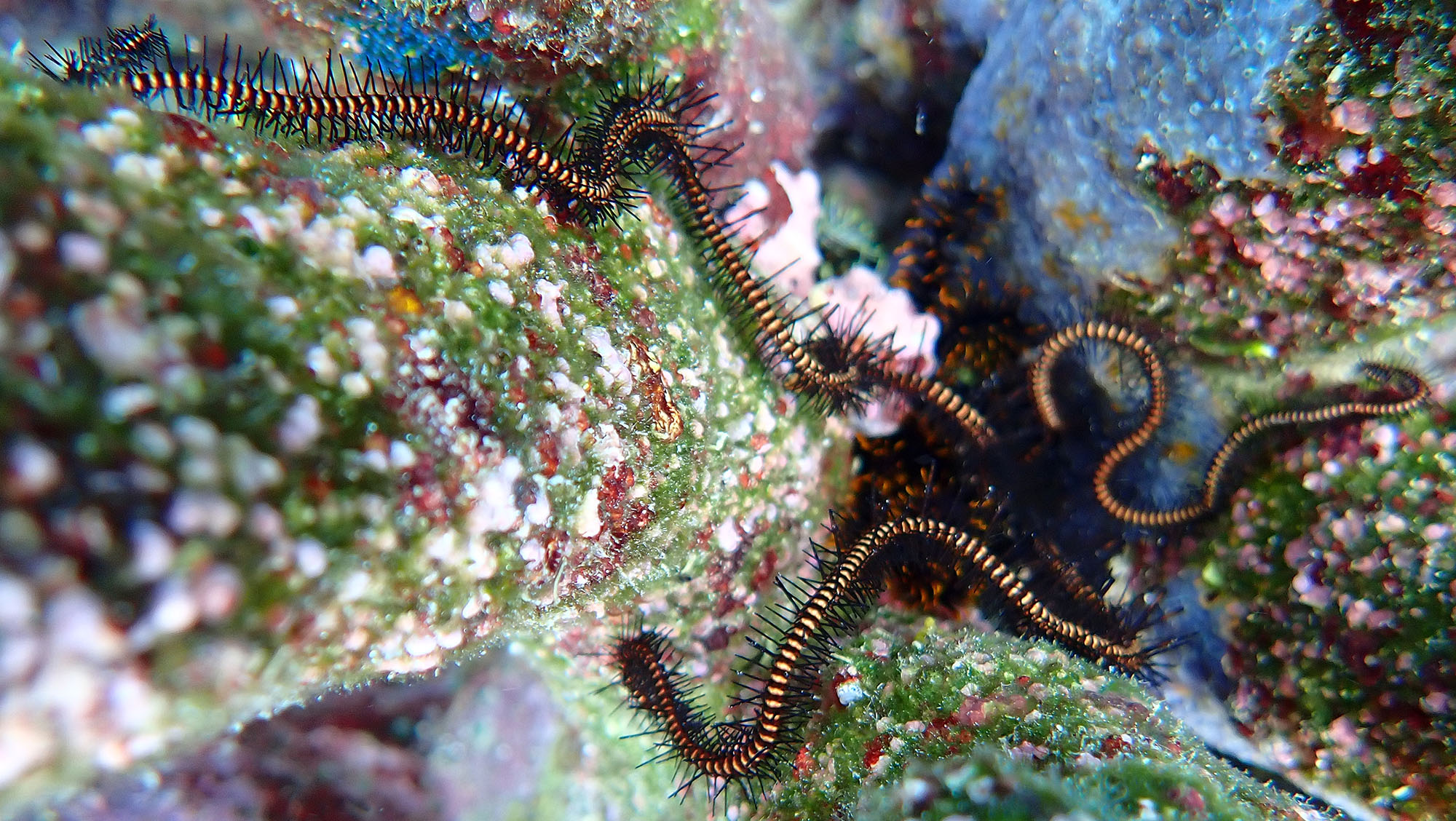 Brittlestar, creeping around coral (Njari, Solomons)
Brittlestar, creeping around coral (Njari, Solomons)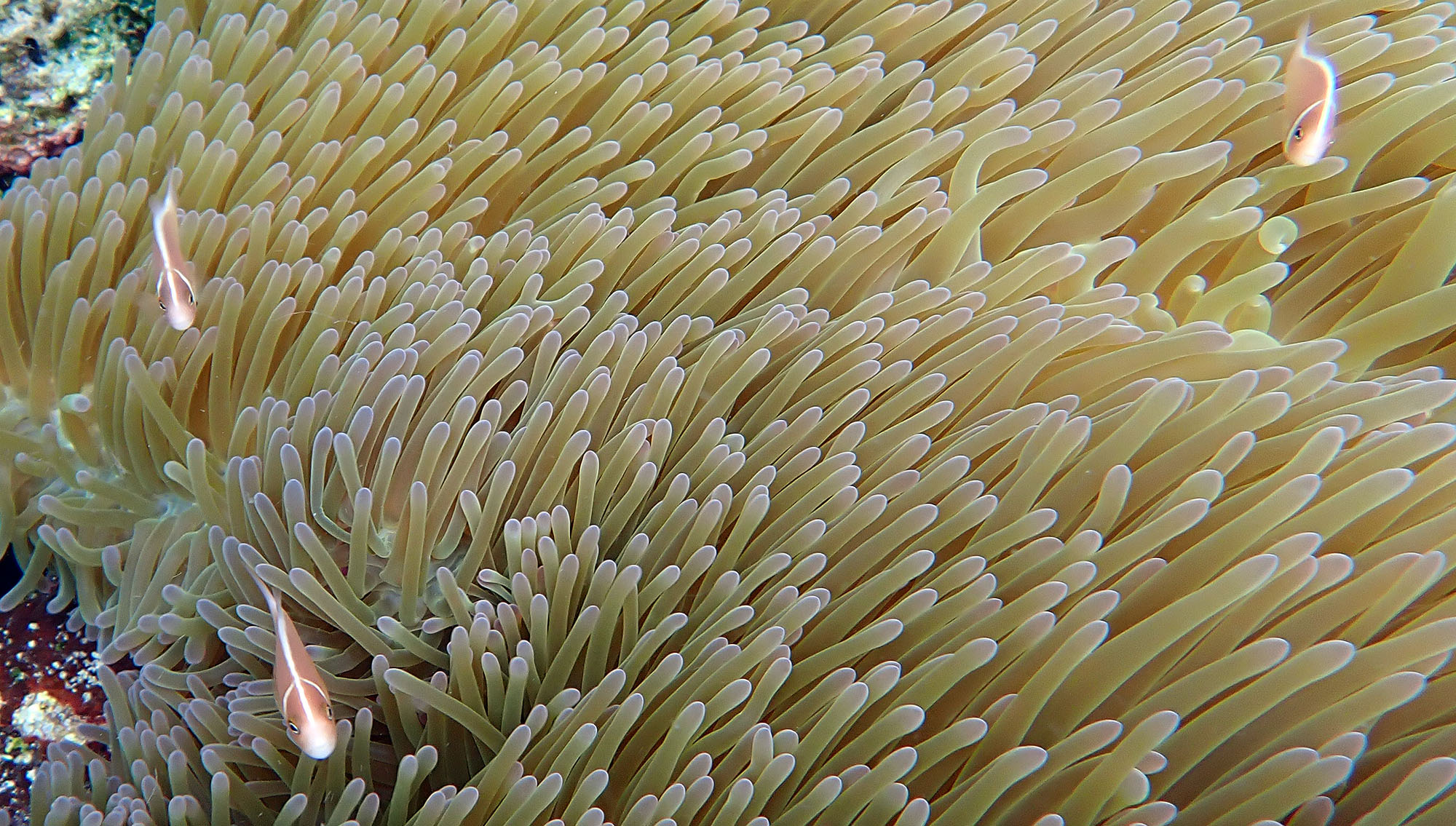 Pink Skunk Anemonefish (Njari, Solomons)
Pink Skunk Anemonefish (Njari, Solomons)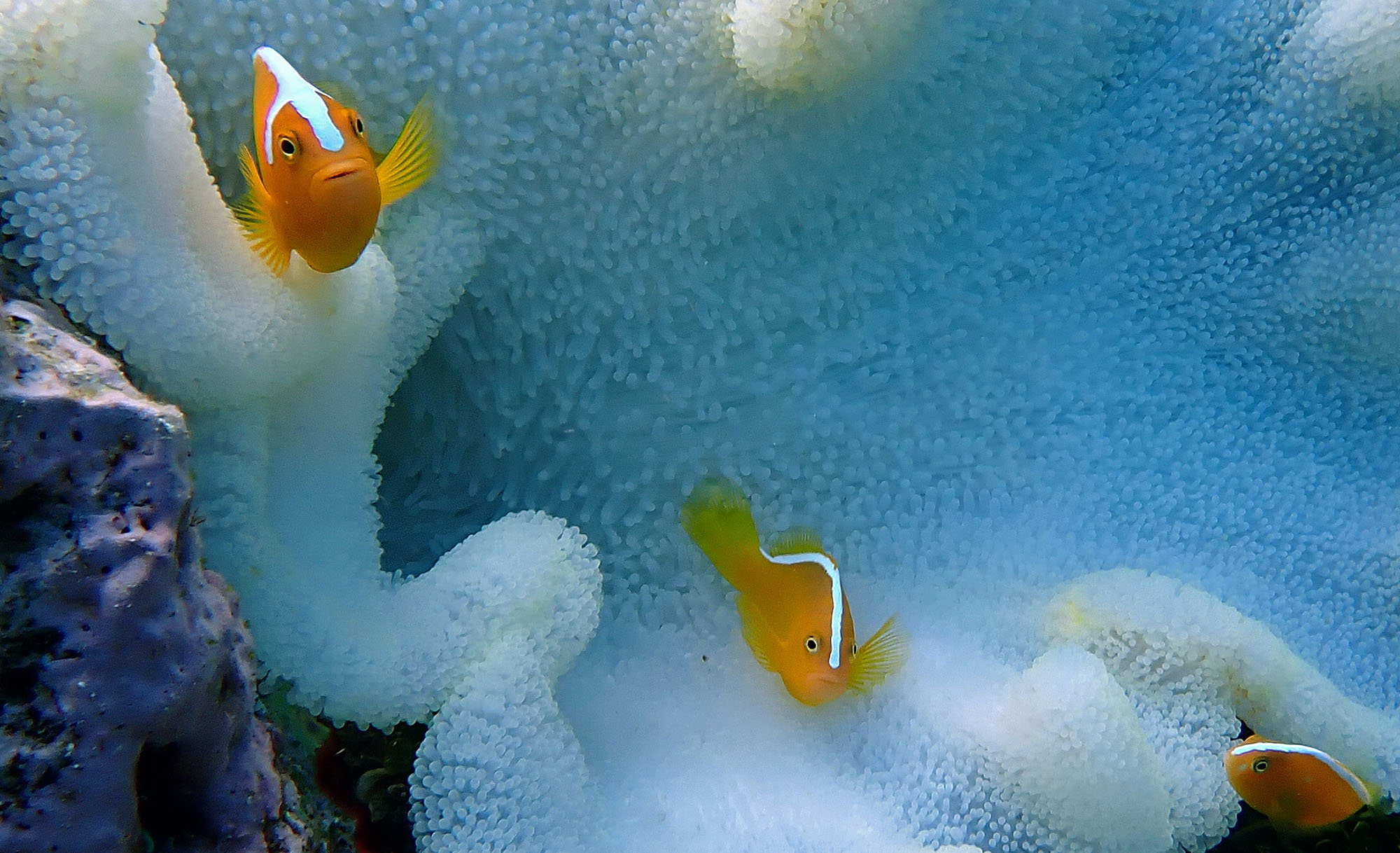 Orange Skunk Anemonefish (Njari, Solomons)
Orange Skunk Anemonefish (Njari, Solomons)Then it was into the wild country of Papua New Guinea! Rabaul Harbour may not be going off every 20 minutes like it used to, but it is still boiling hot...
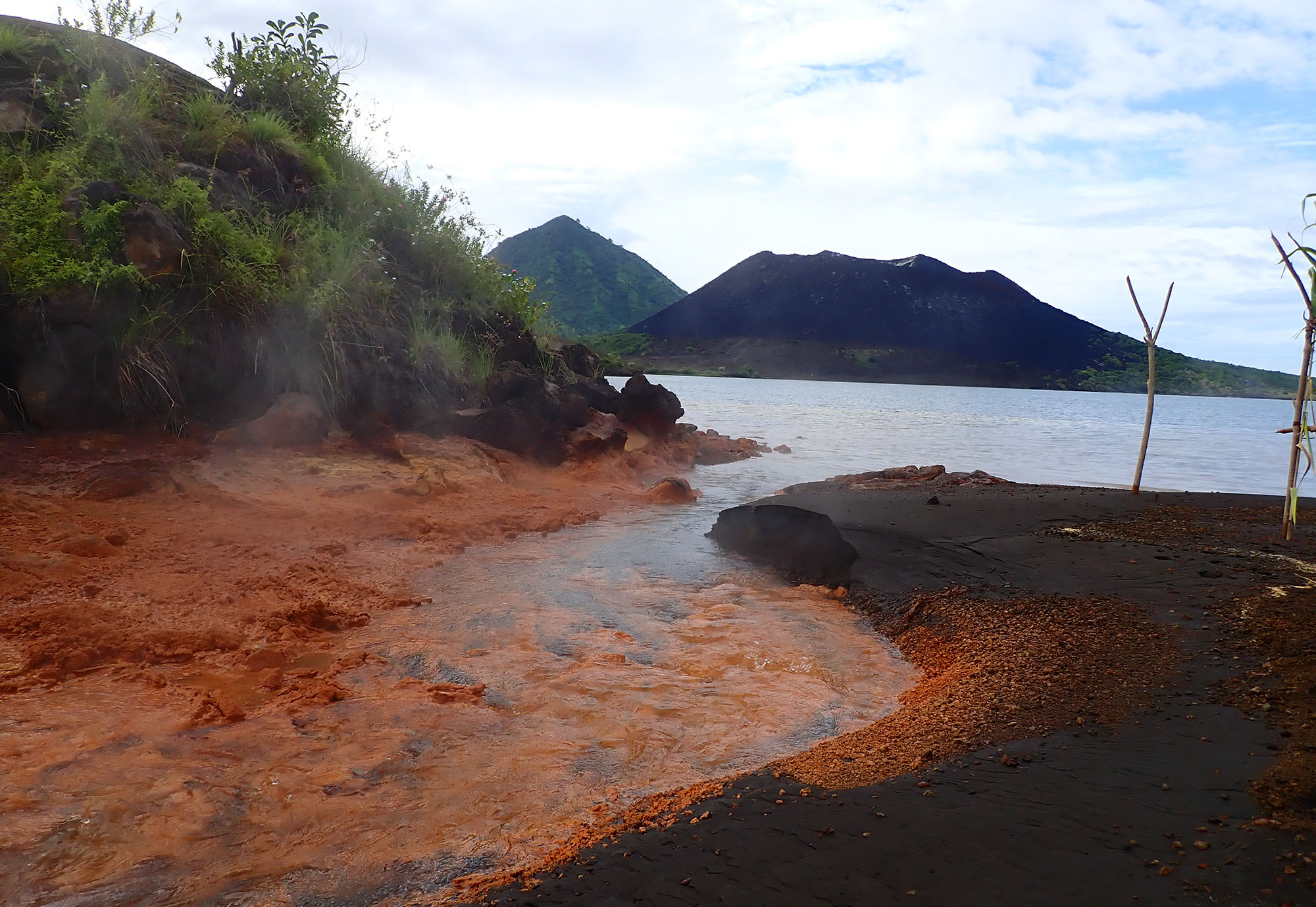
Expedition stops at Jacquinot Bay have varied over the years. This time we zodiac cruised up a different river in the Palmalmal region, where we spotted various big birds, such as Papuan Eclectus Parrots, White Cockatoos, and Blyth Hornbill, as well as Great Flying Fox.
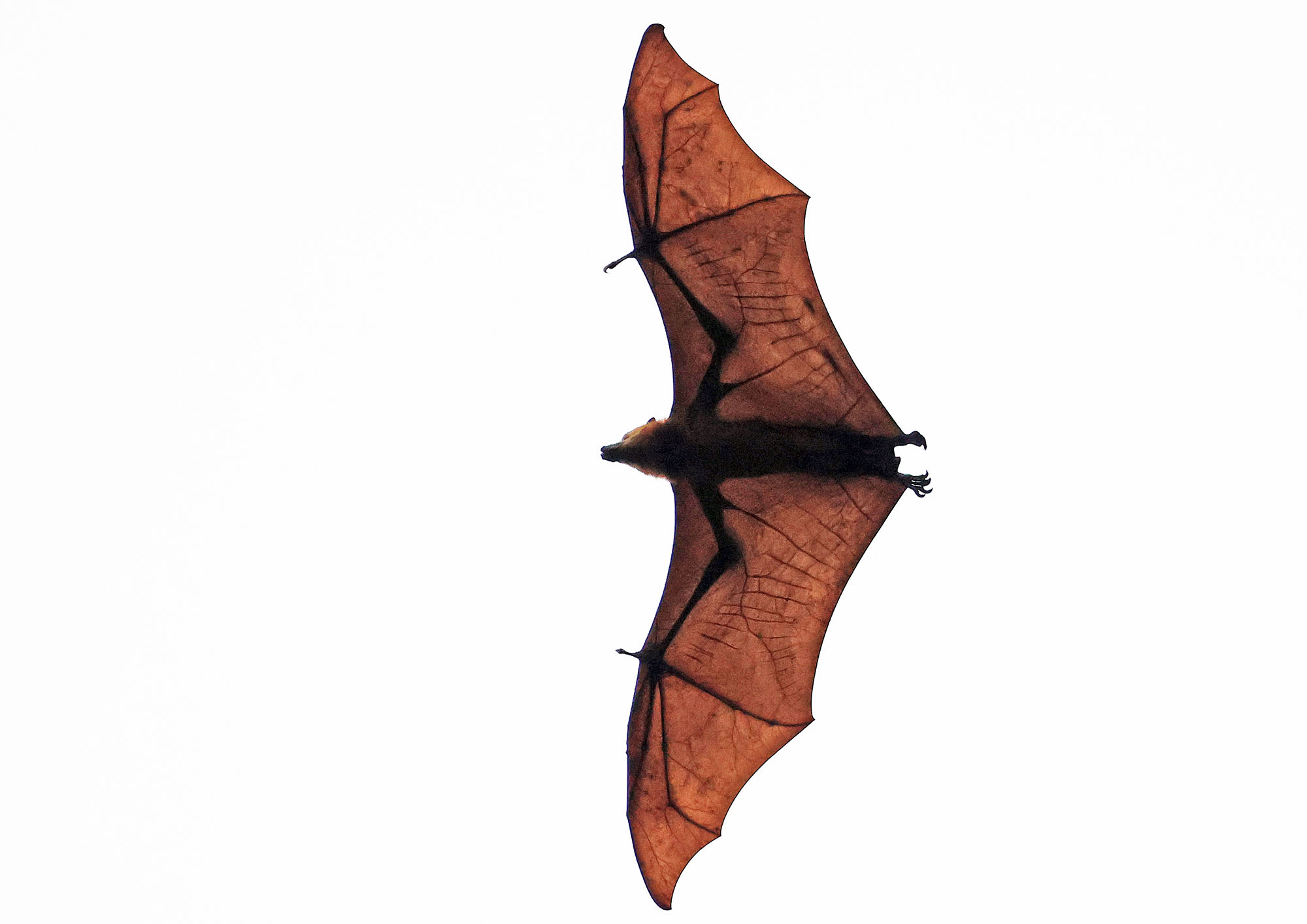 Great FF! (PNG)
Great FF! (PNG)We saw the usual tropical birds while travelling at sea between sites, such as Crested Terns, as well as Brown, Red-footed and Masked Booby...
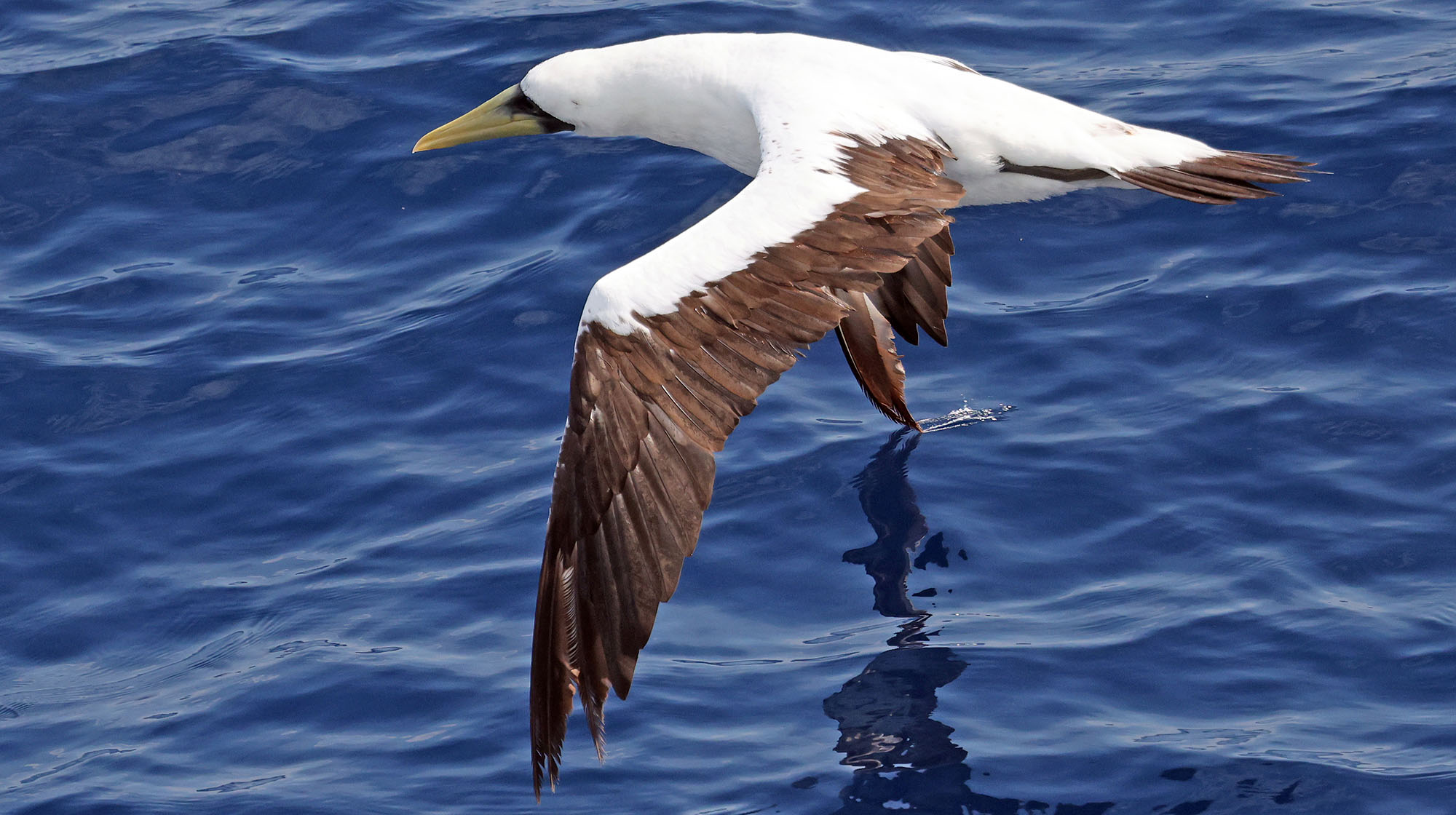 touching the surface of the sea with it's wing tip
touching the surface of the sea with it's wing tipThe Trobriands are famous for their sing-sings, but there are other sights there, such as the stunning 'Claret-breasted Fruit Doves'. We saw a number of these behind the village. They are common on the smaller islands of the Solomons, with a disjunct population on the 'trobs'.
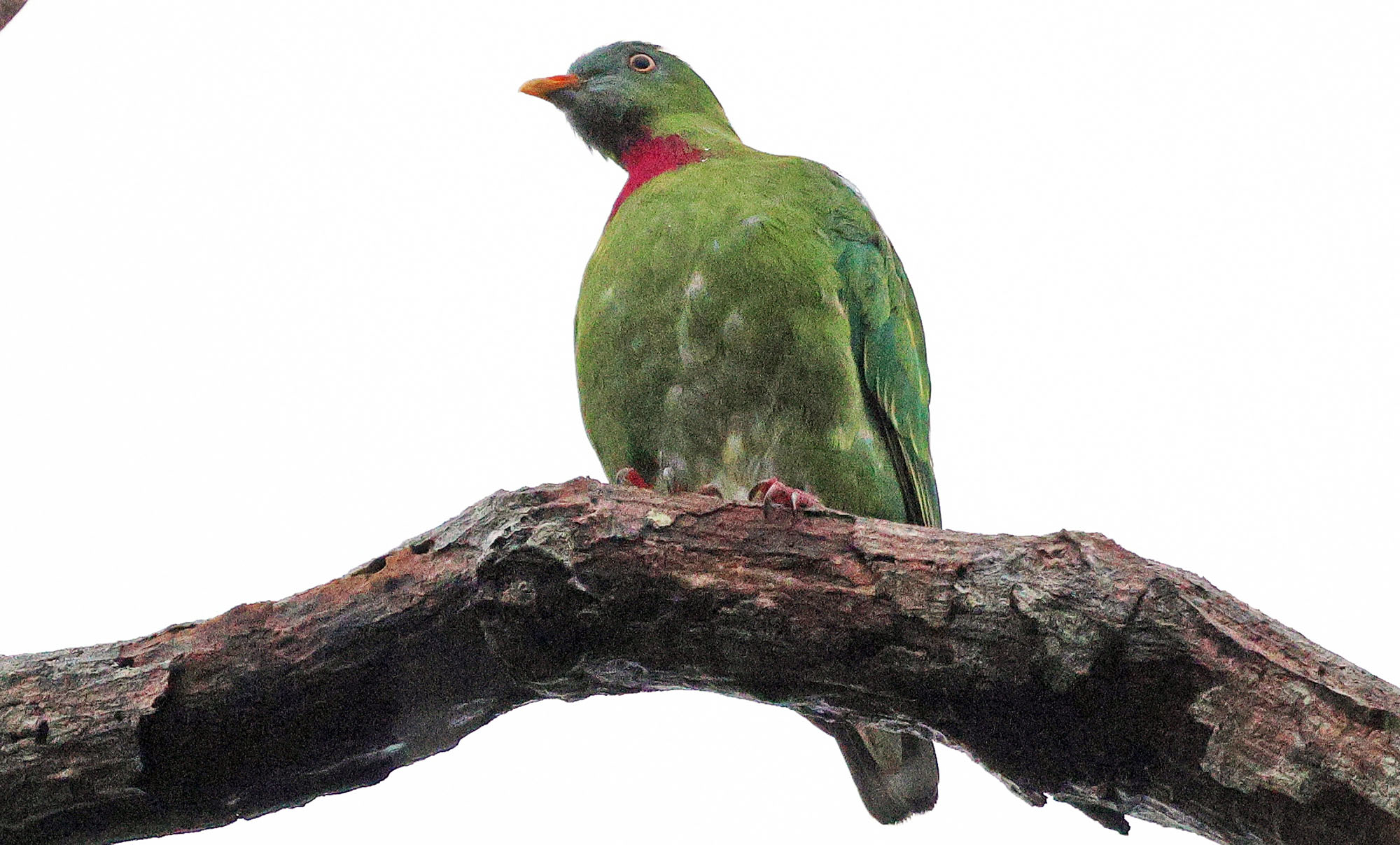 Claret-breasted Fruit Dove
Claret-breasted Fruit DoveTime for a short snorkel off a small beach at the Tufi 'Fjords', PNG...
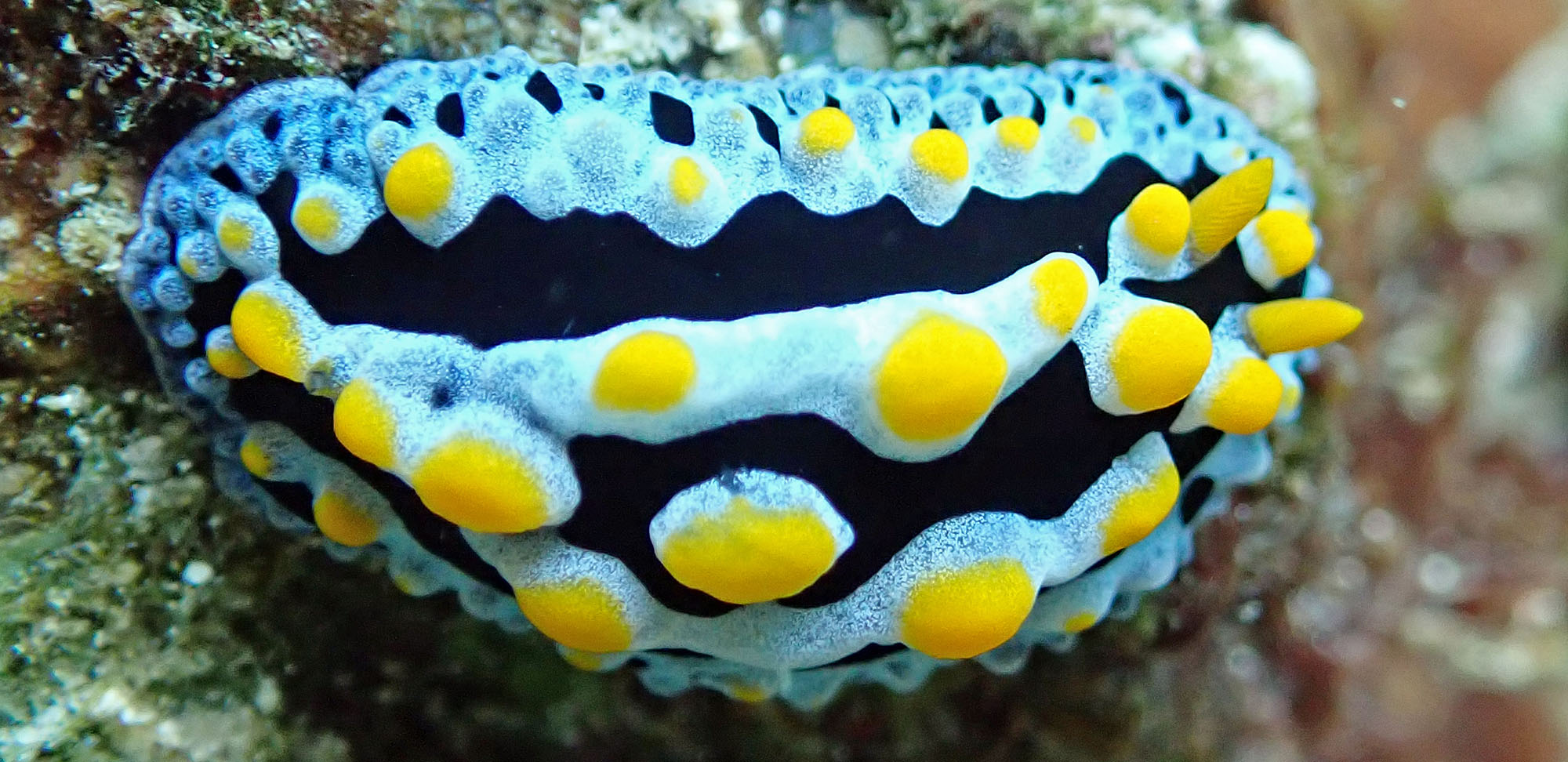 A nudibranch, Phyllidia varicosa (Tufi, Papua New Guinea)
A nudibranch, Phyllidia varicosa (Tufi, Papua New Guinea)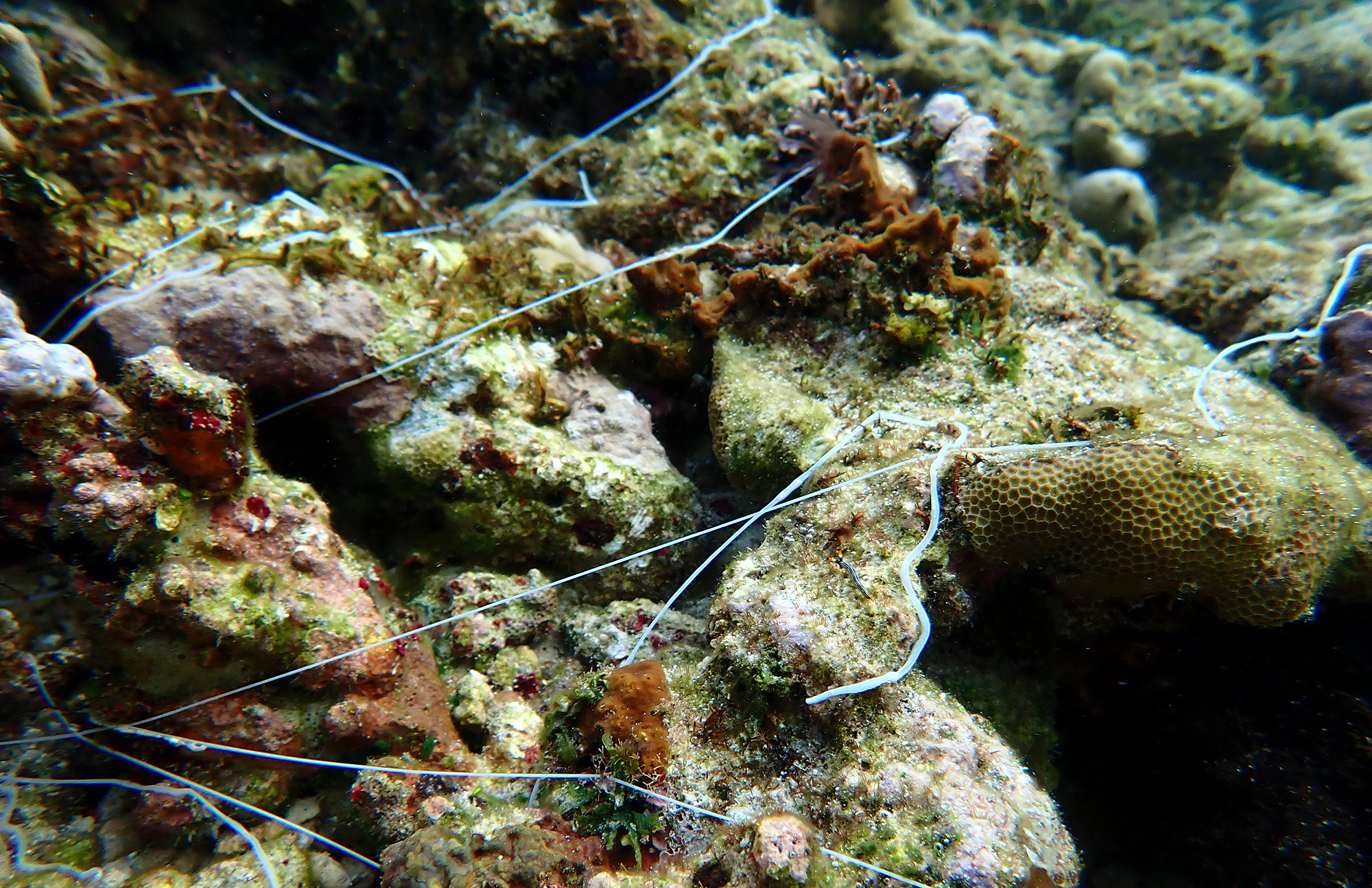 If you find something that looks like strands of cotton across the coral, you are probably looking at a 'Spaghetti Worm'.
If you find something that looks like strands of cotton across the coral, you are probably looking at a 'Spaghetti Worm'.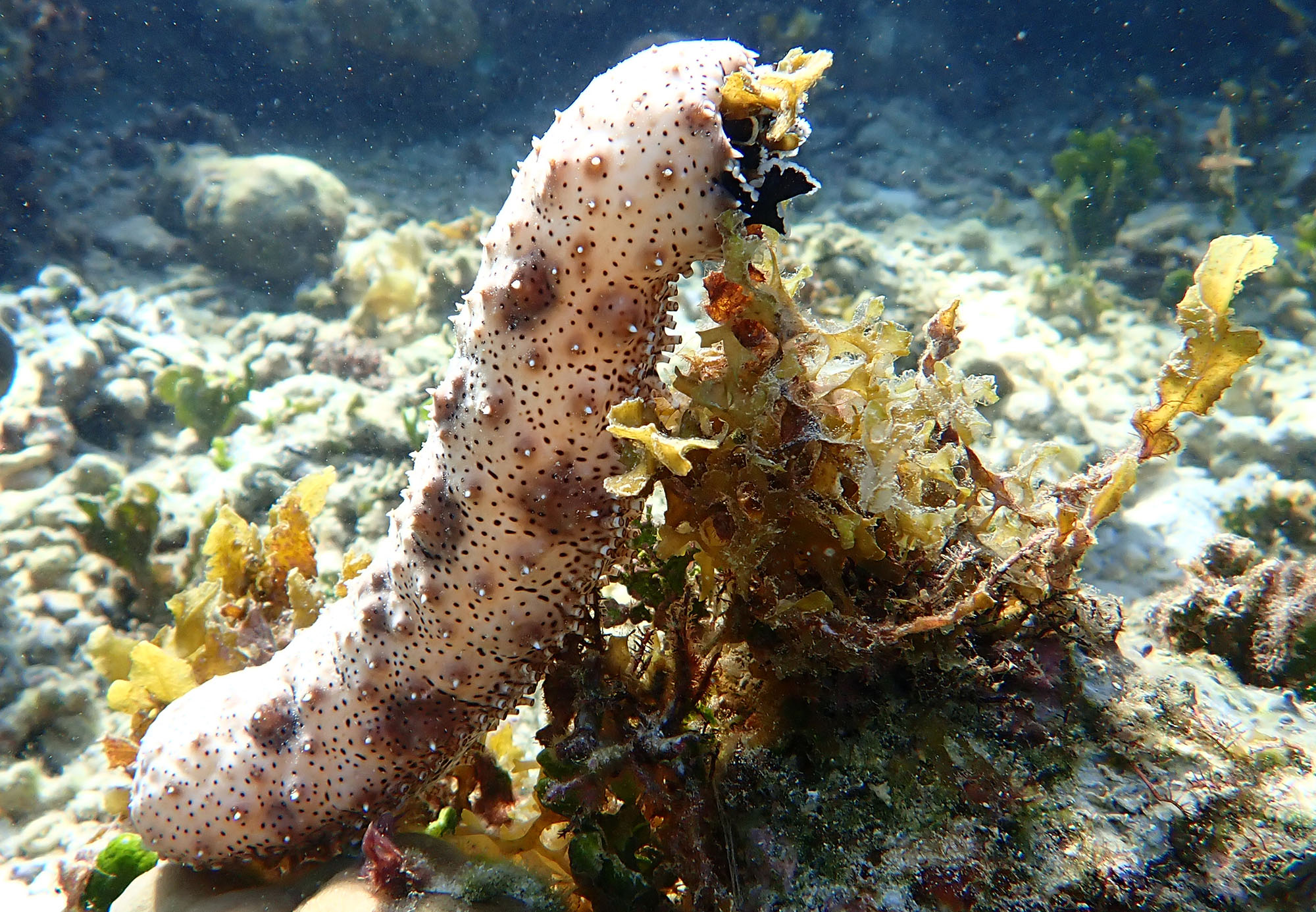 A Sea Cucumber: in this erect posture, it may be in the process of releasing sexual material (Tufi 'Frjords')
A Sea Cucumber: in this erect posture, it may be in the process of releasing sexual material (Tufi 'Frjords')The Dei Dei Hot Springs has been a regular stop on expedition itineraries in Papua New Guinea for a long time. Many years ago we starting getting better views of the 'Curl-crested Manucode' (a Bird-of-Paradise), so a few of us started pushing for an early departure for bird-watching. I have been lucky enough to do this a few times, although it usually rains. I didn't get the chance this time, however, there were still birds to be seen at the landing, such as the pretty 'Orange-fronted Fruit Doves', 'Varied Triller', and 'Papuan Eclectus Parrot' above the track.
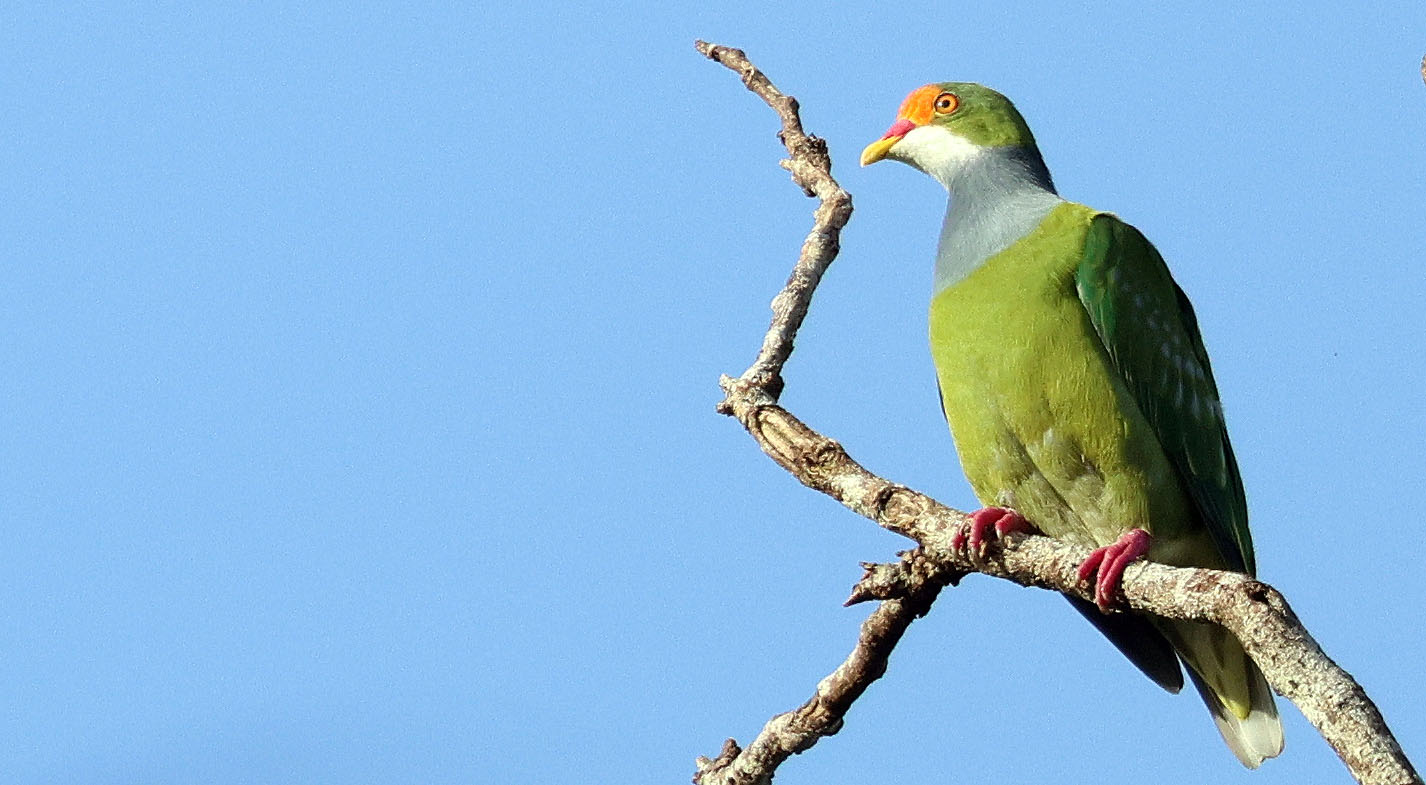 Orange-fronted Fruit Dove (Dei Dei, PNG)
Orange-fronted Fruit Dove (Dei Dei, PNG)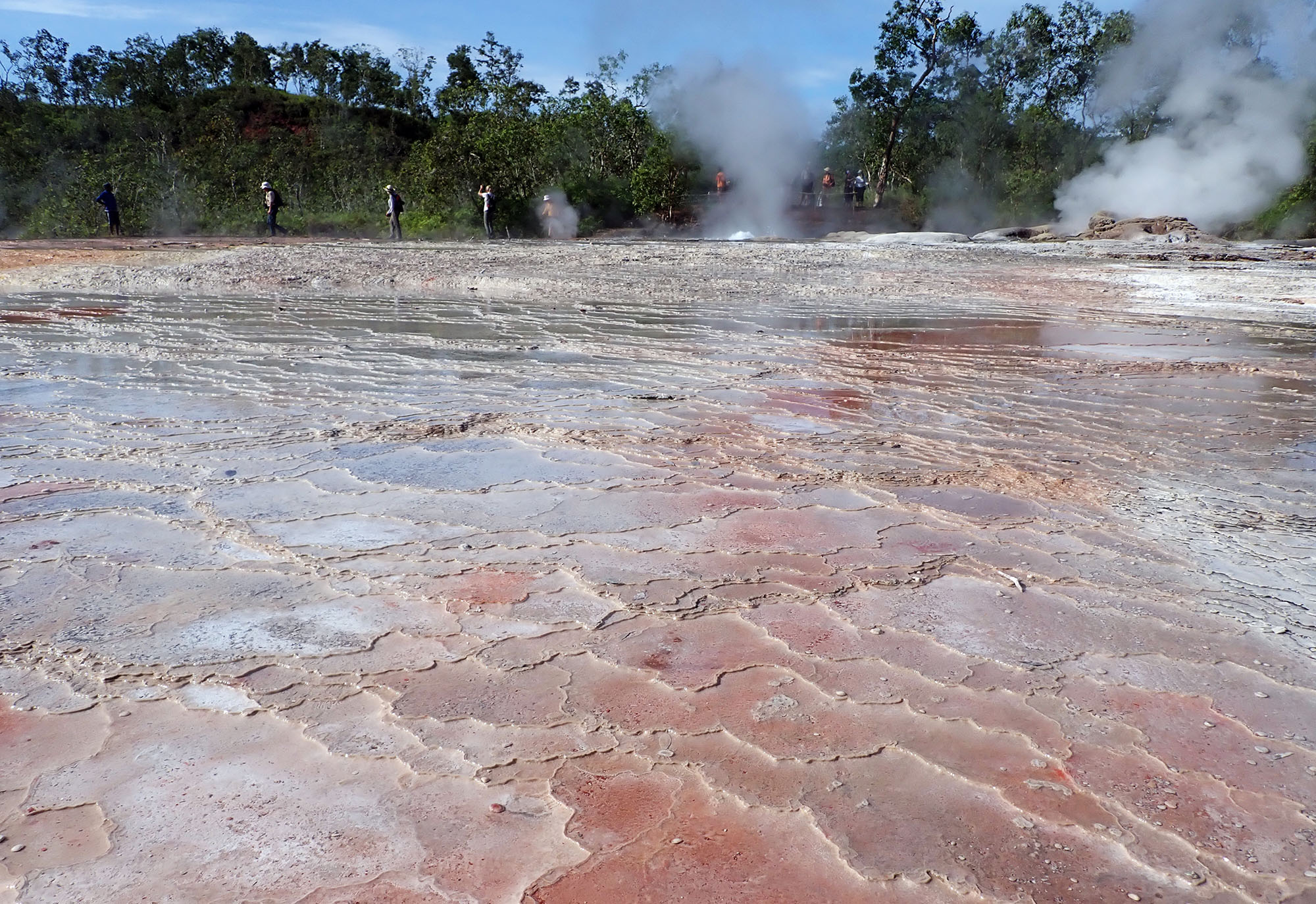 Dei dei hot springs changes colour over time and in different lights...
Dei dei hot springs changes colour over time and in different lights...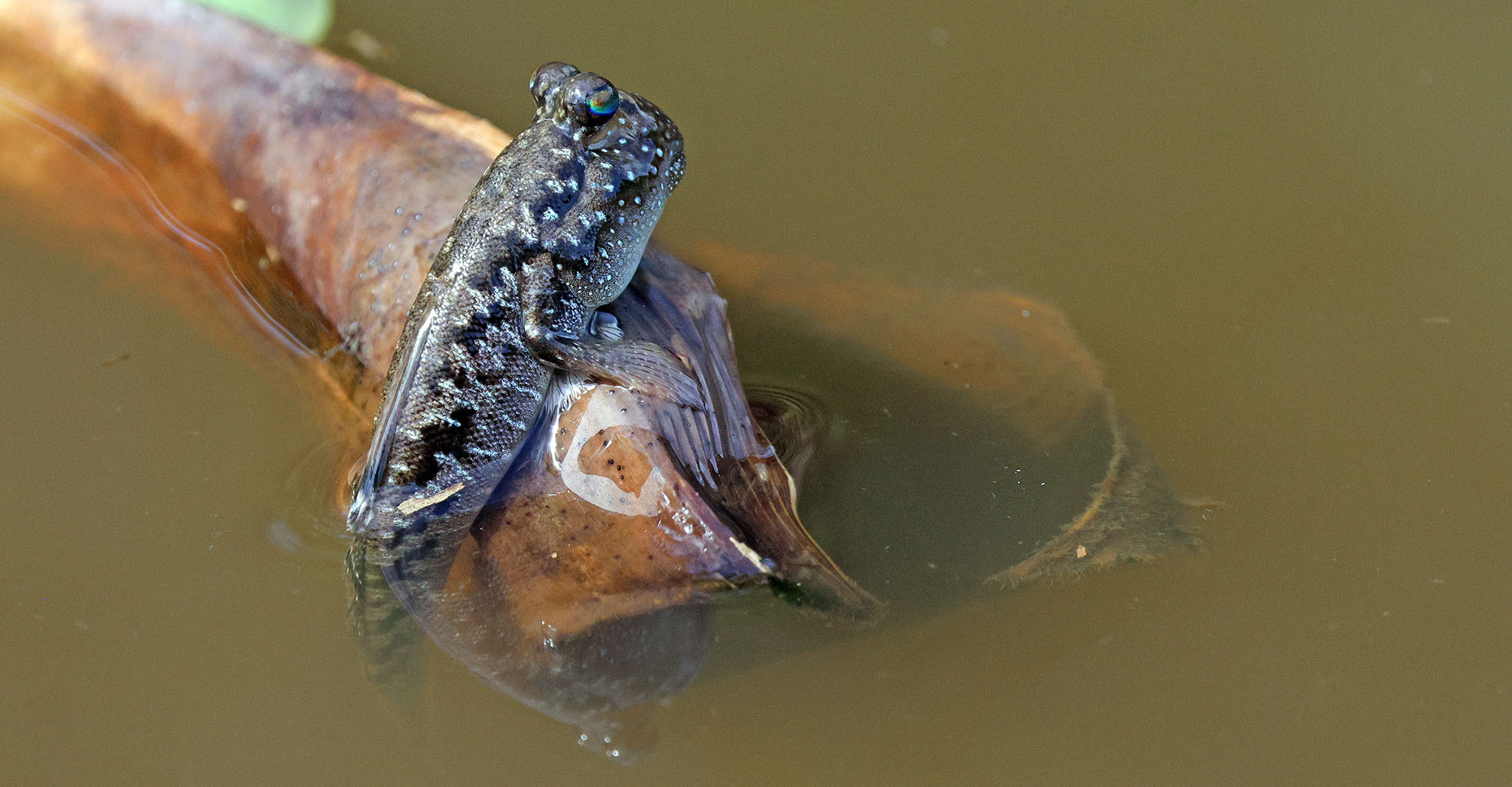 Schlumsprinnger?
Schlumsprinnger?Then it was off for some MORE snorkelling, this time at Dobu. We visited this little village for many years, and didn't realize there was such a large and pristine area of coral not too far away. This day was a little murky, but as rich as ever...
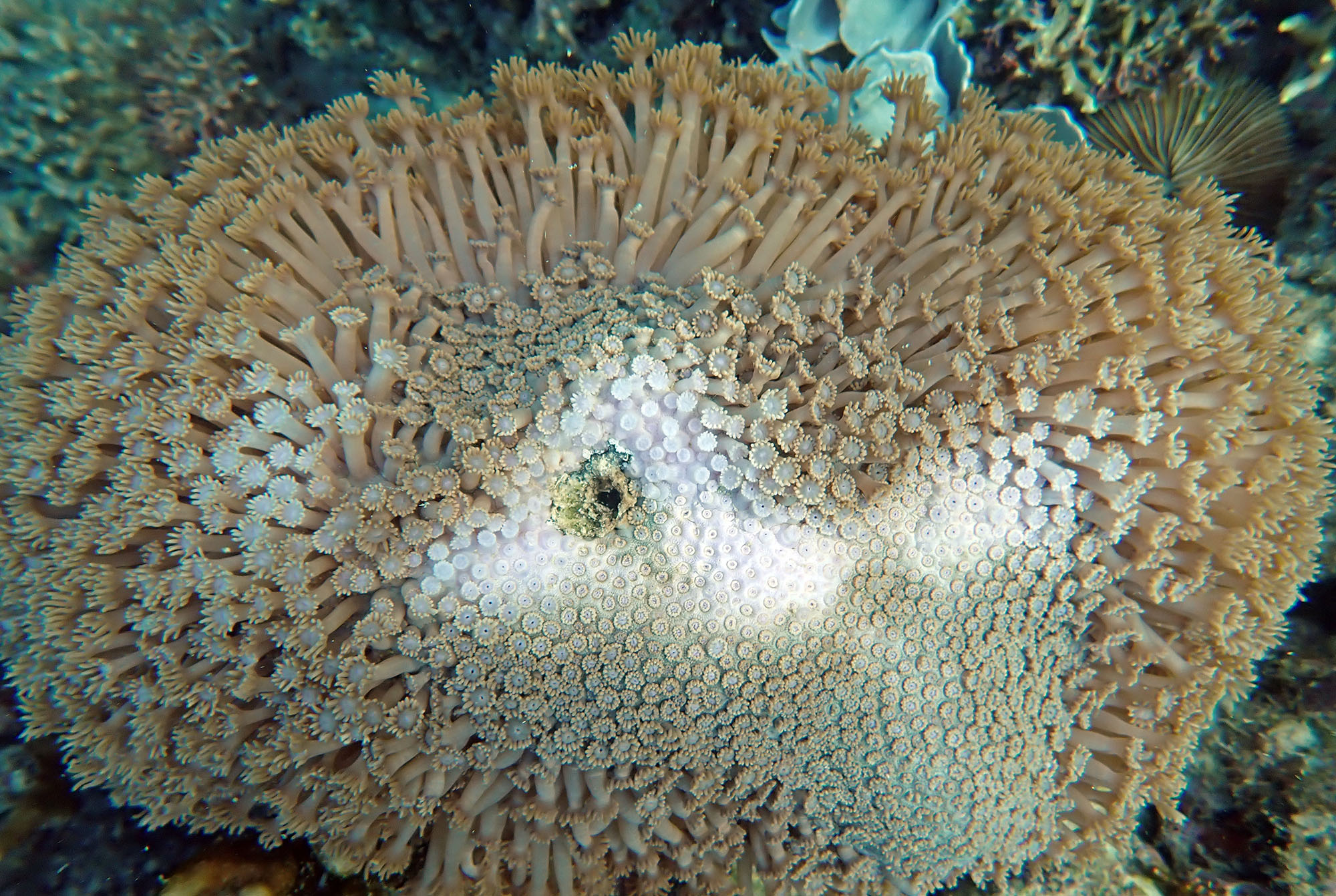 a coral with some polyps extended for feeding
a coral with some polyps extended for feeding Featherstar (Dobu, PNG)
Featherstar (Dobu, PNG)One last stop in New Guinea and one last snorkel. This time a new place for me, at Deka Deka Island, not far from Samarai, the old capital. The morning was halted by lightening and thunder and torrential rain, but before being interrupted, most of us managed a quick snorkel. While the reef wasn't huge or pristine, the water was quite clear and the irregularly spaced 'bommies' provided a few nice species...
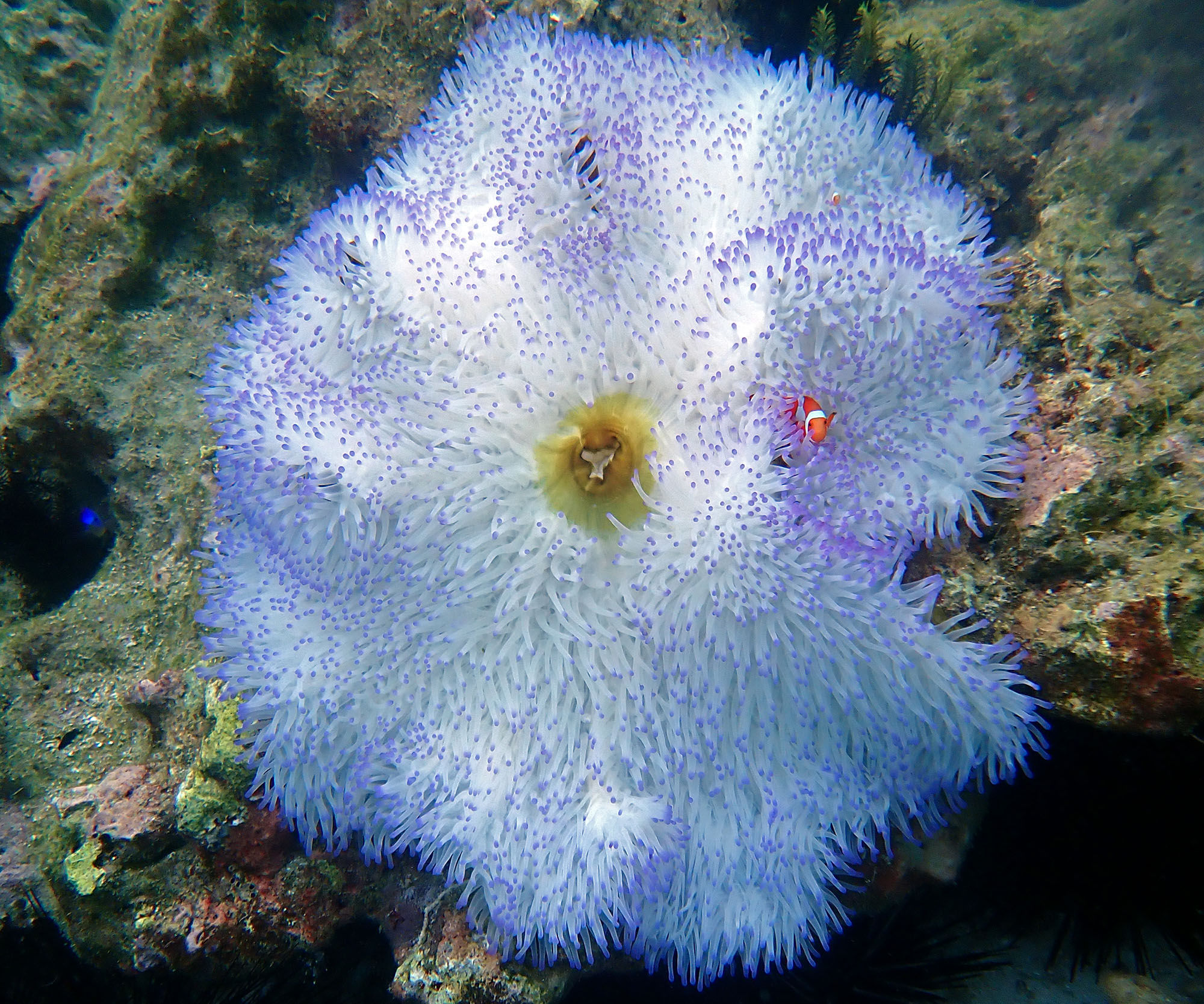
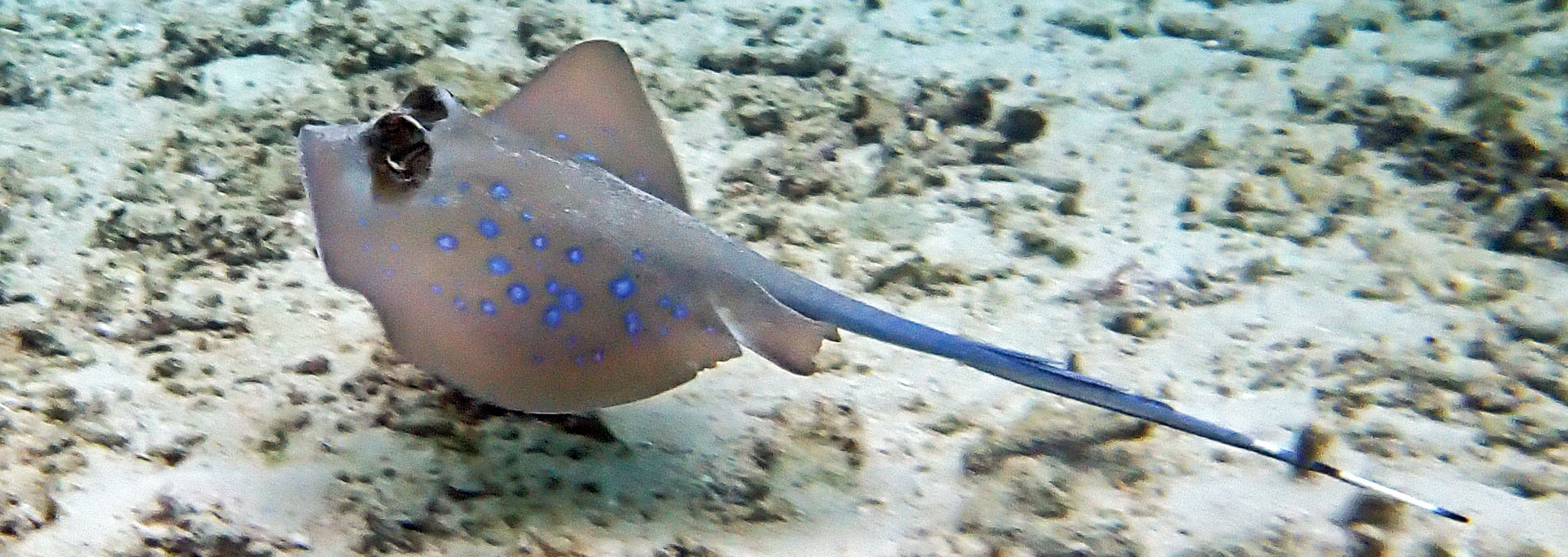 Blue-spotted Mask Ray
Blue-spotted Mask RayAs we crossed from Thursday Island at the end of Queensland, to Cape York at the tip, and then cruised 'across the top' of the Northern Territory, I didn't take too many photos on this final Australian leg,. Those NT spots included a few regulars, such as the Wessel Islands and the Gove town of Yirrkala. But there was also a new stop, Bremer Island, and a chance for the passengers to stroll around beautiful long beaches at their own pace. On the various walks we were surprised to spot a number of tiny frogs: these were little Burrowing Frogs. These amphibians would normally be buried for the dry season, and only come out at Christmas to start hopping and humping. But today they had emerged from the sand covered in grains, perhaps tricked by some late season rains.
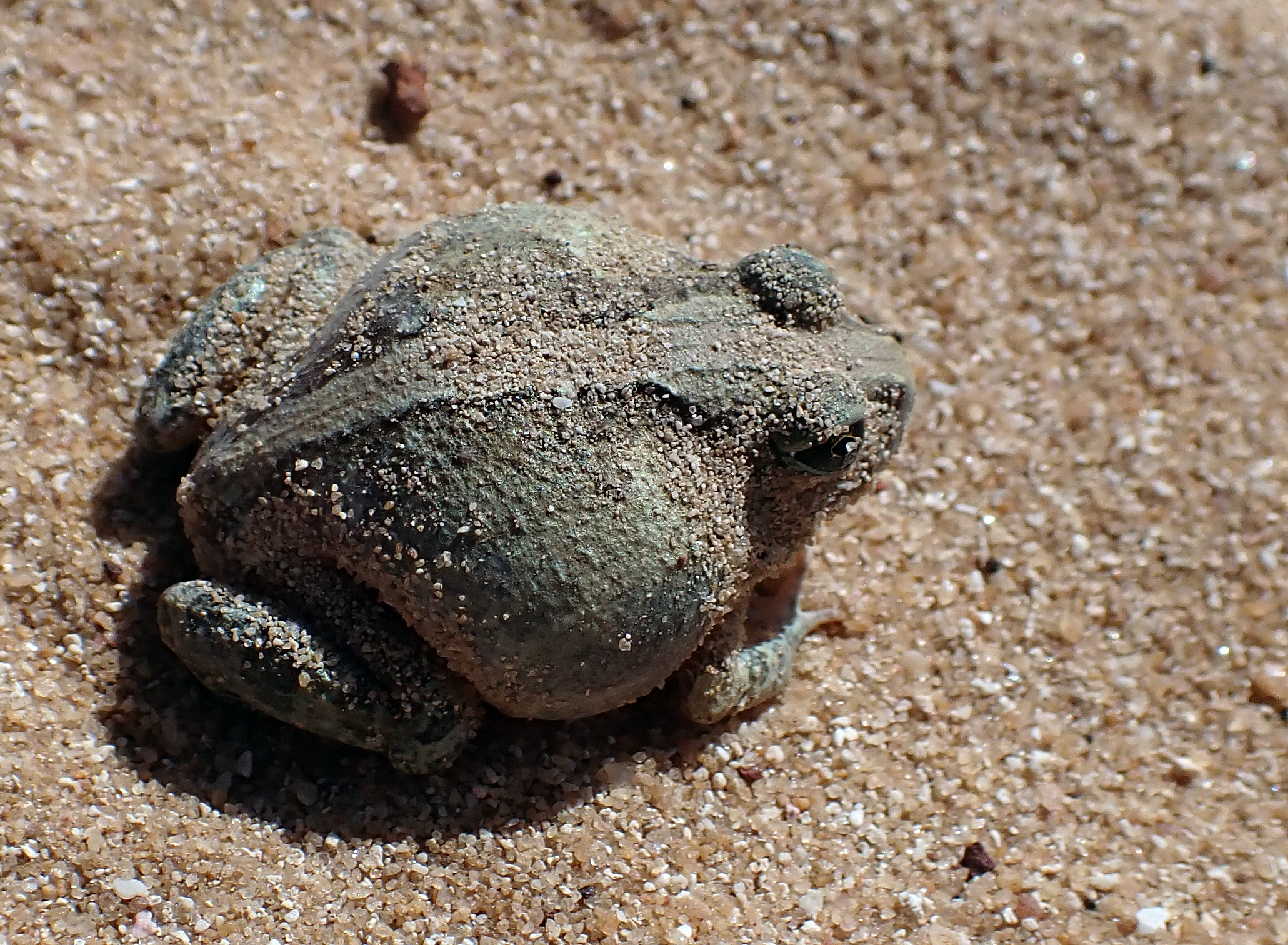 "Am I early or late??" (Bremer Island, NT)
"Am I early or late??" (Bremer Island, NT)...and finally into Darwin...
to search this website (and the internet):
Your second block of text...

